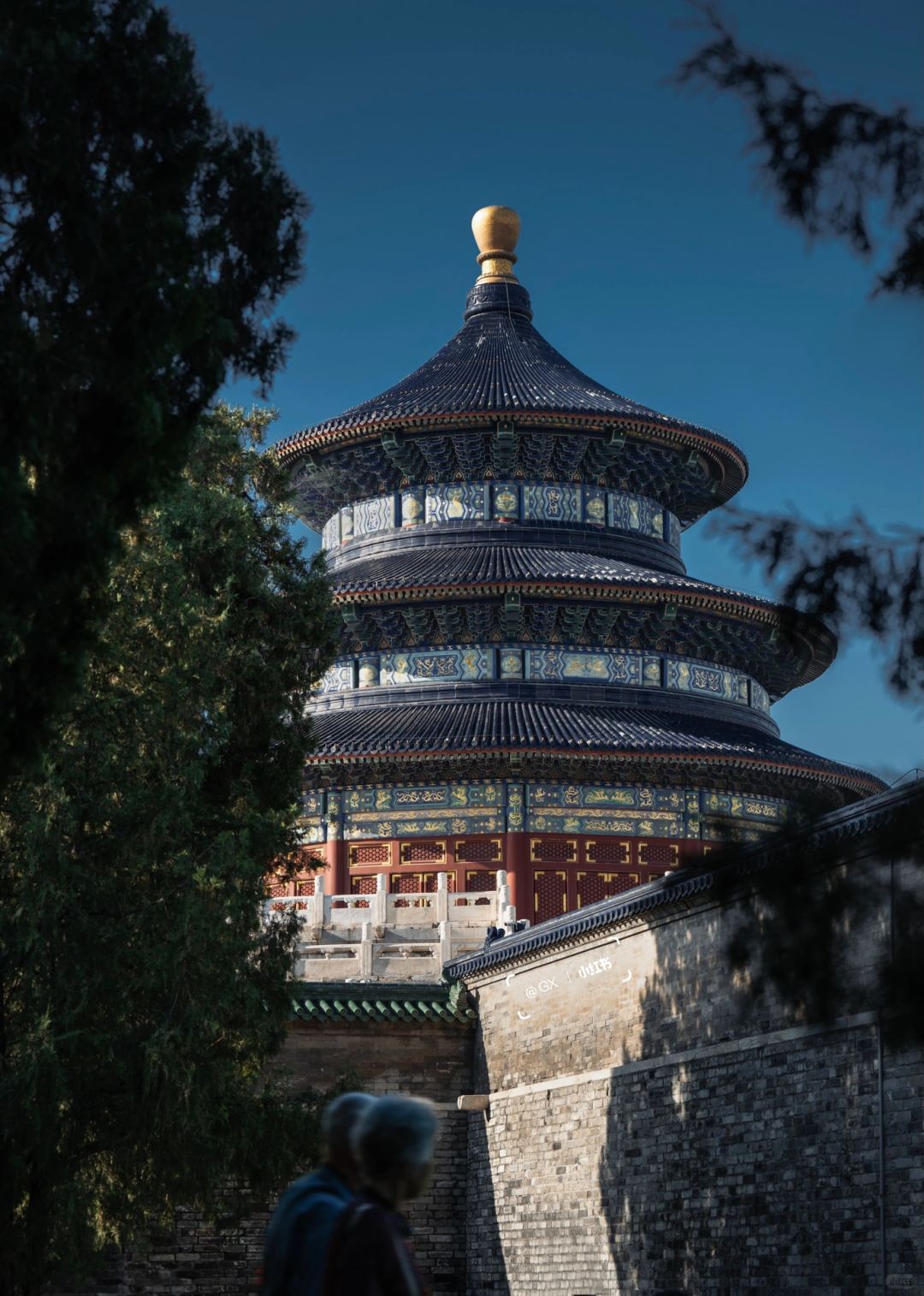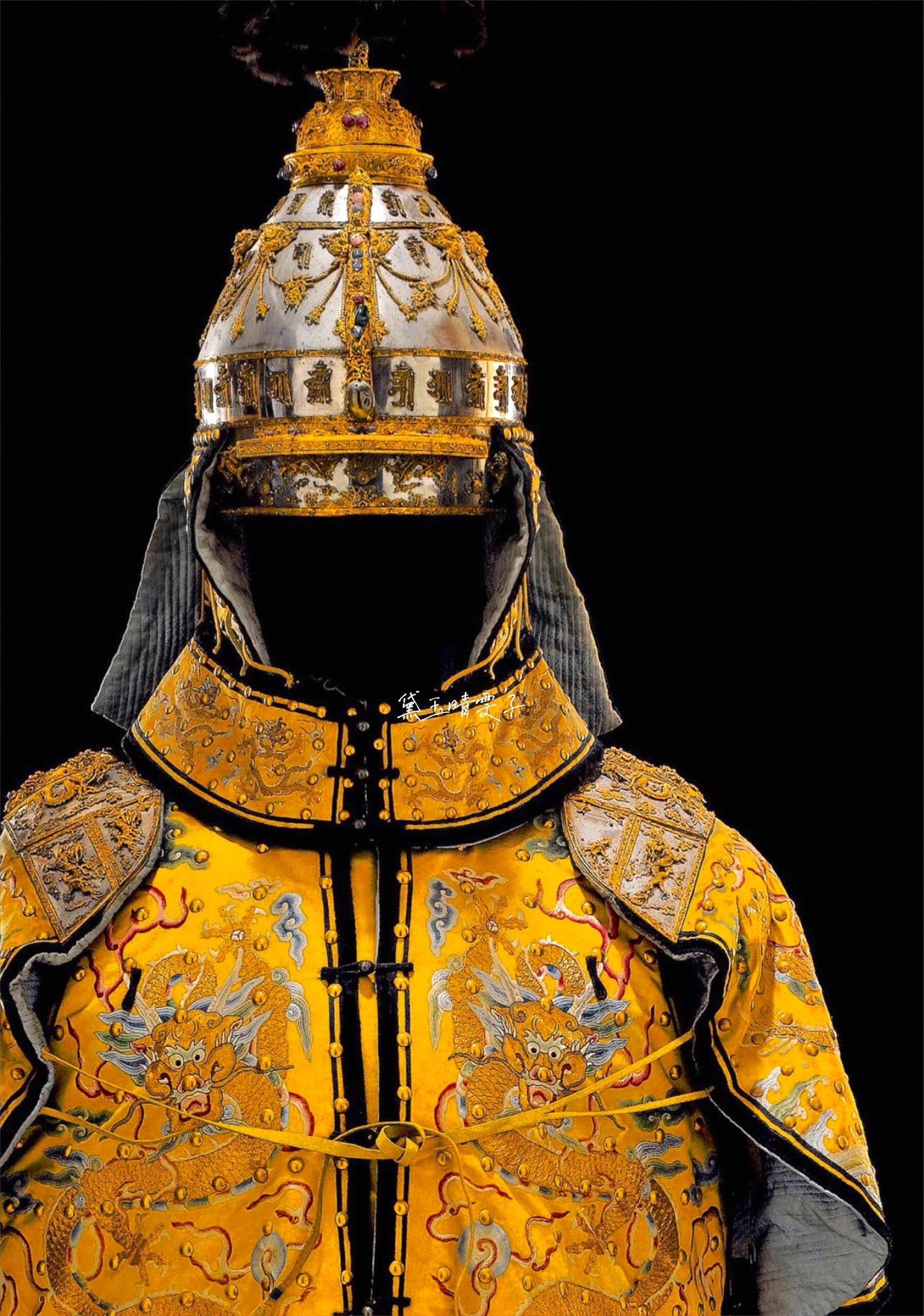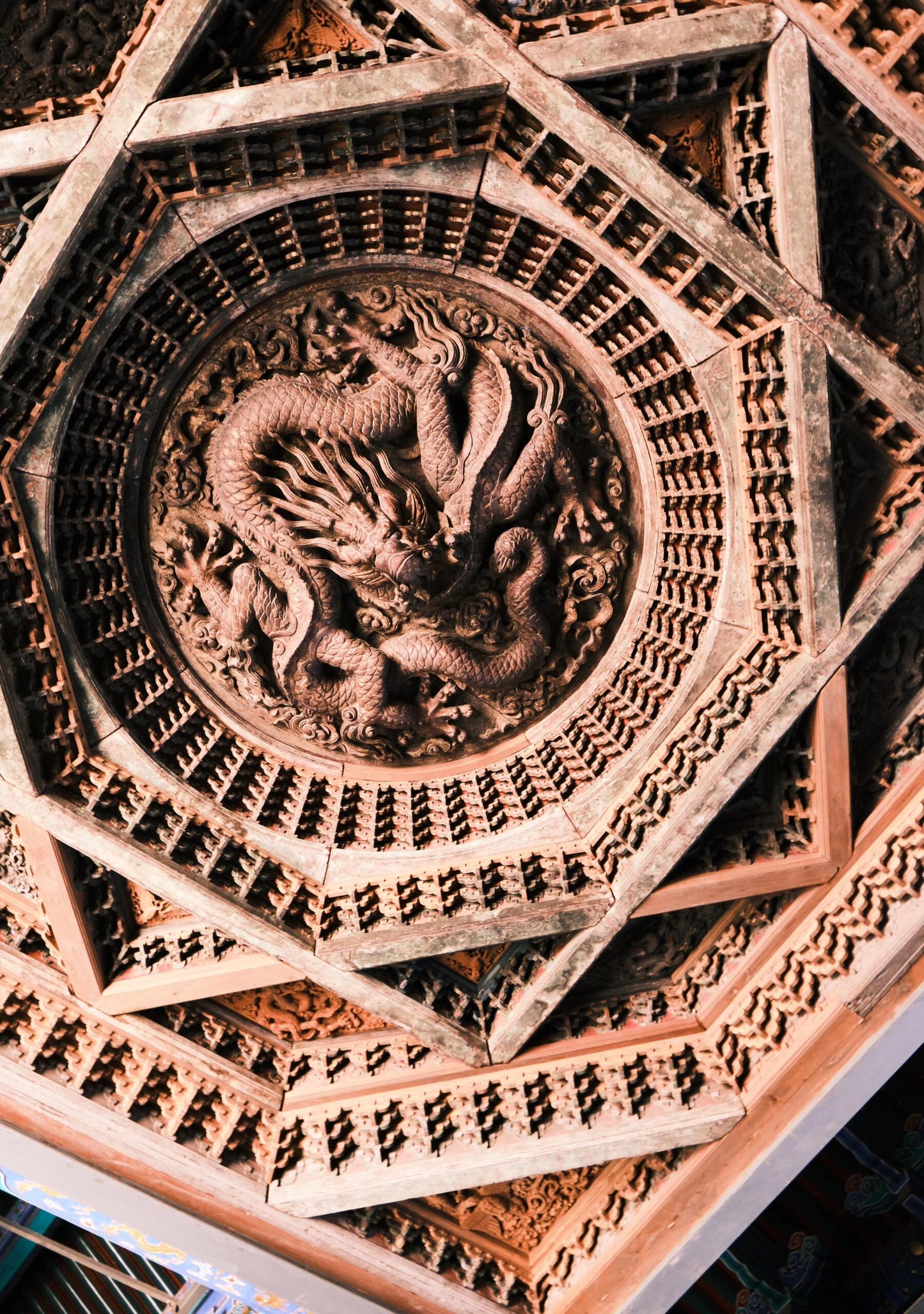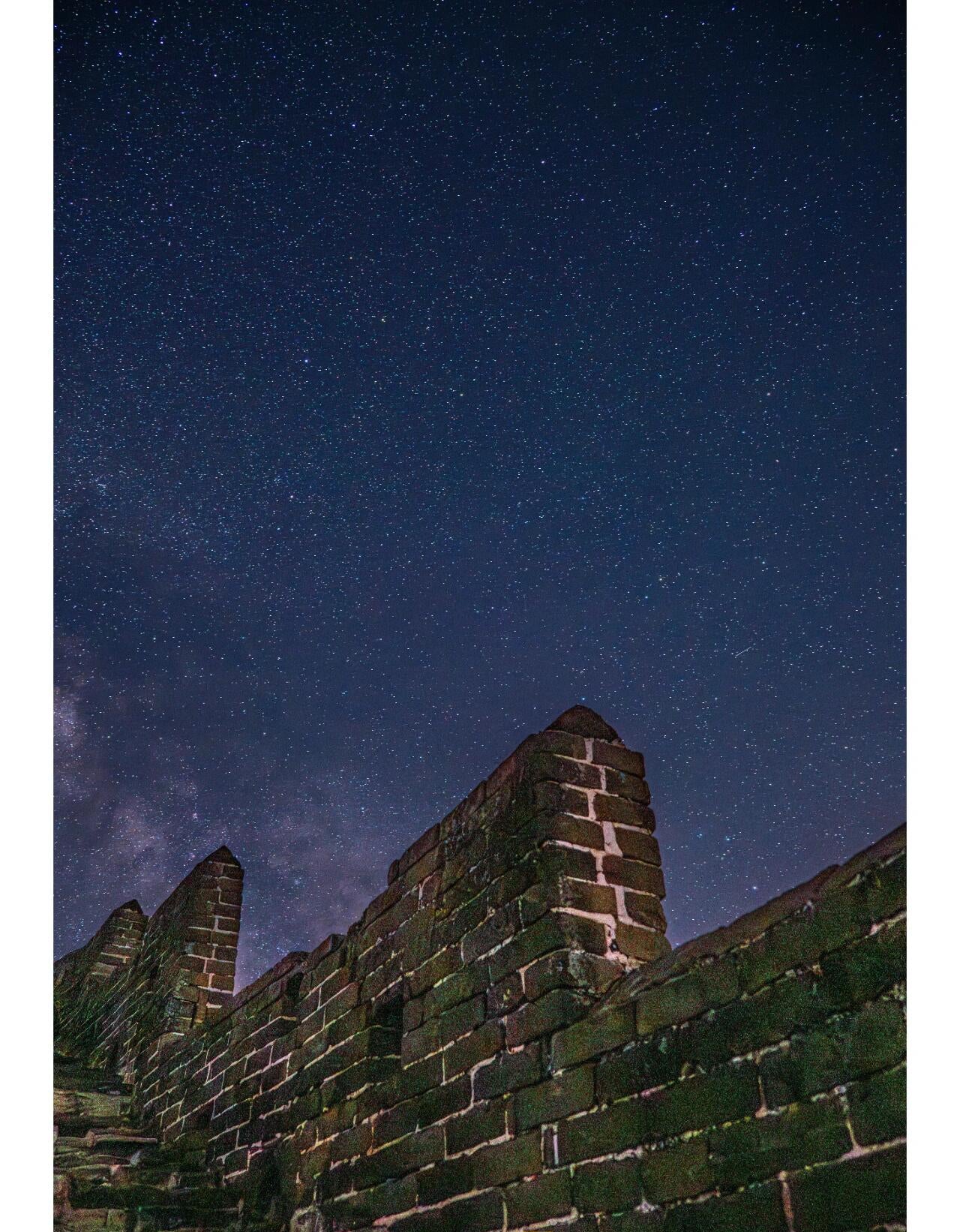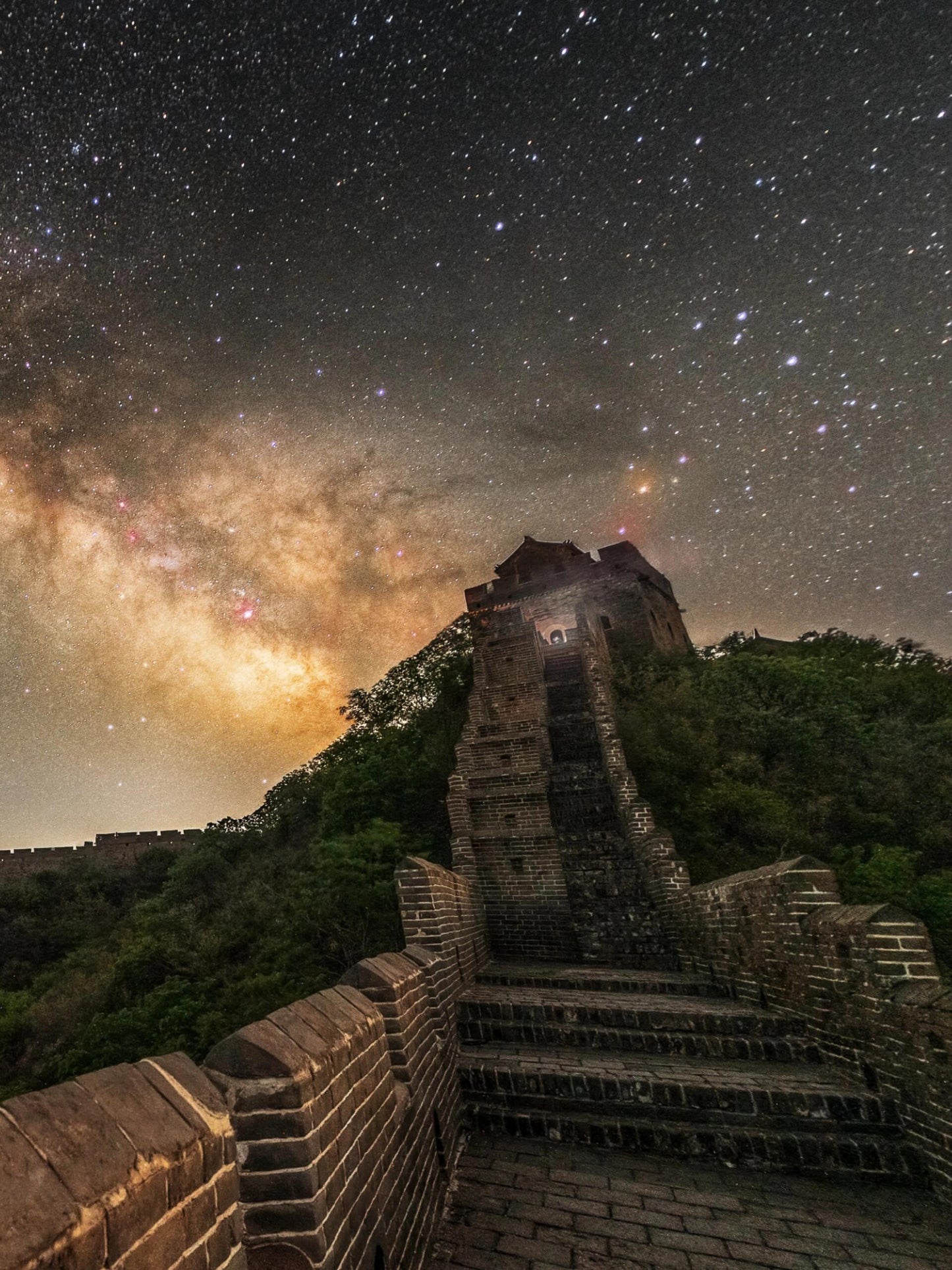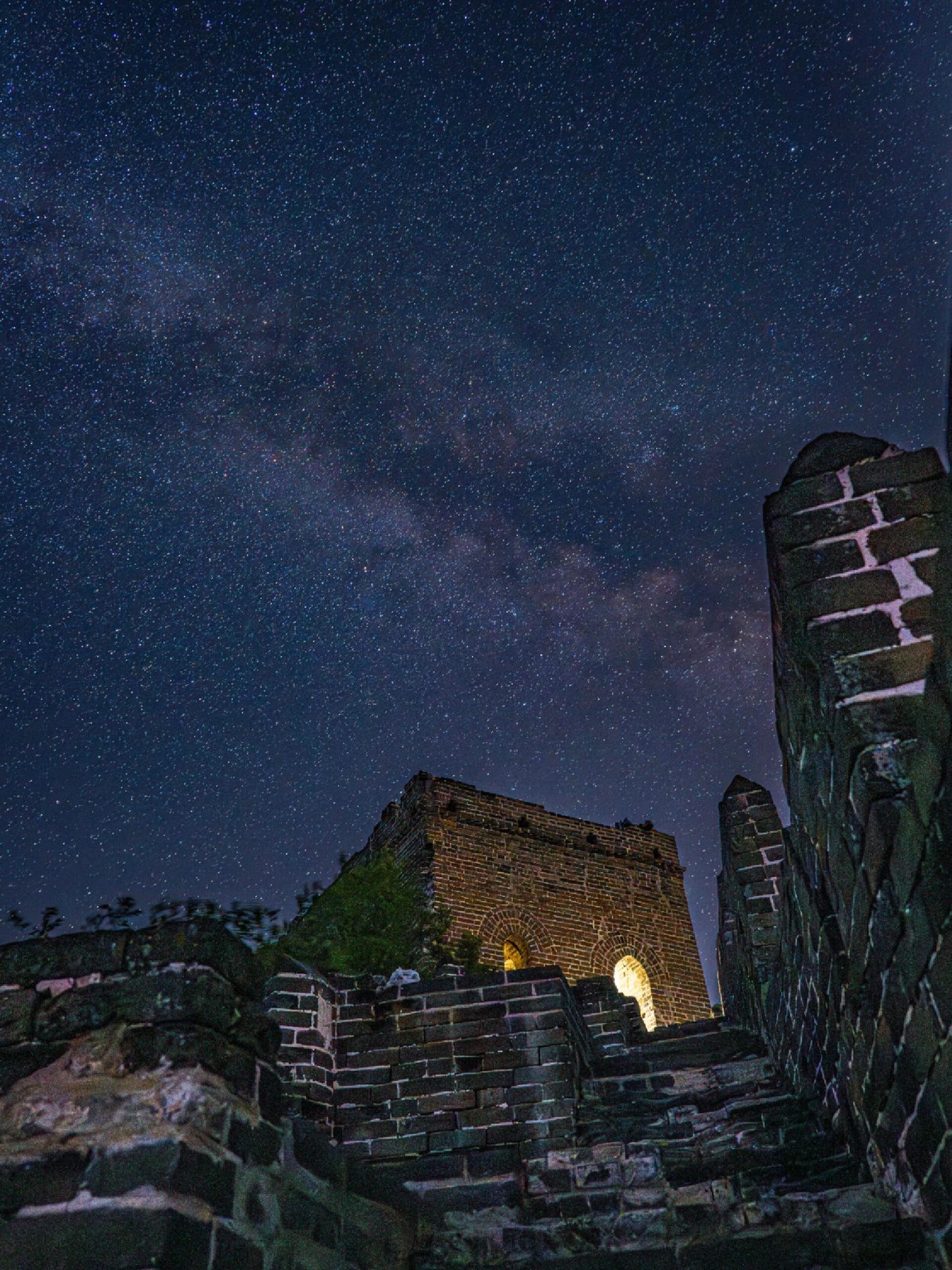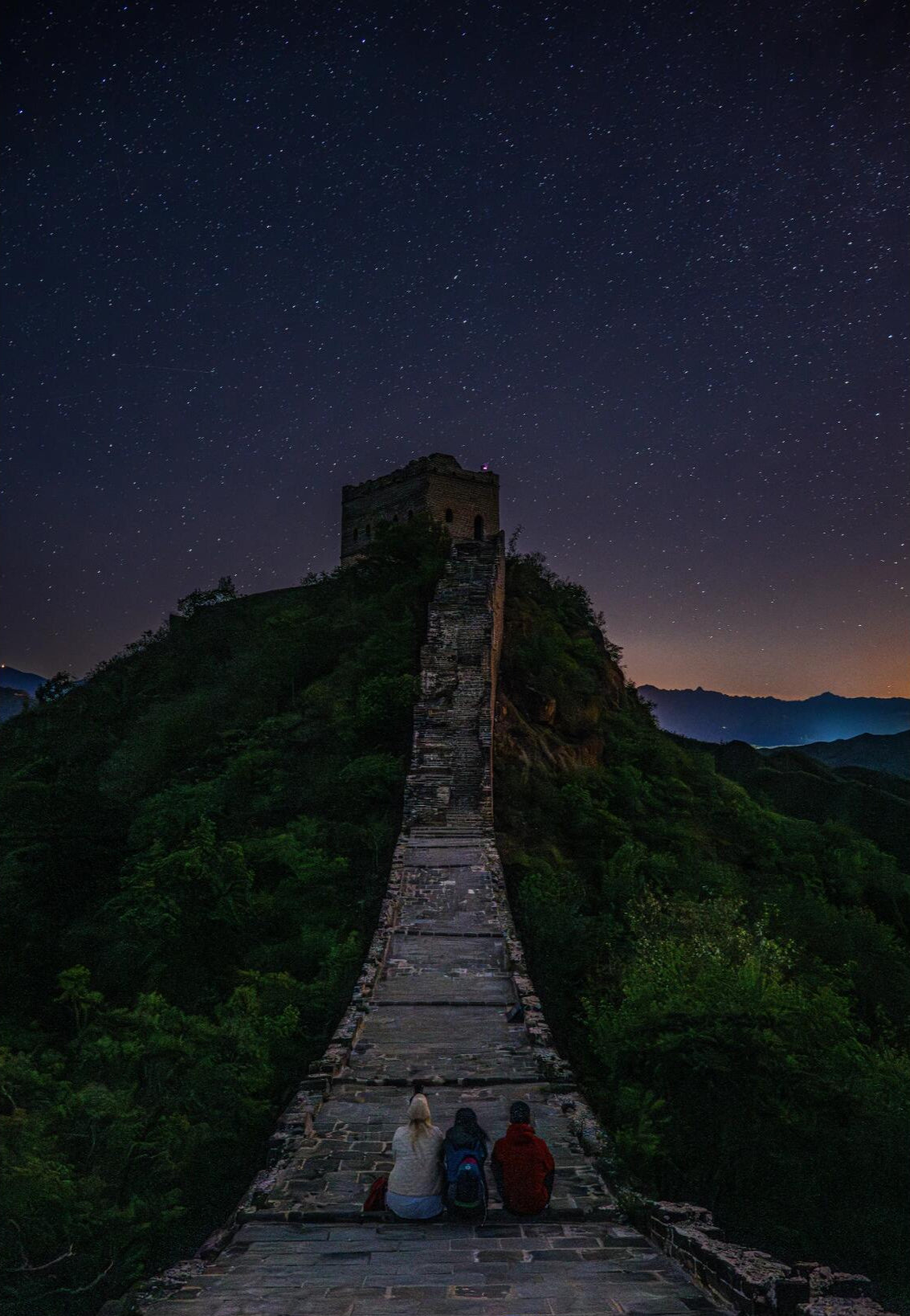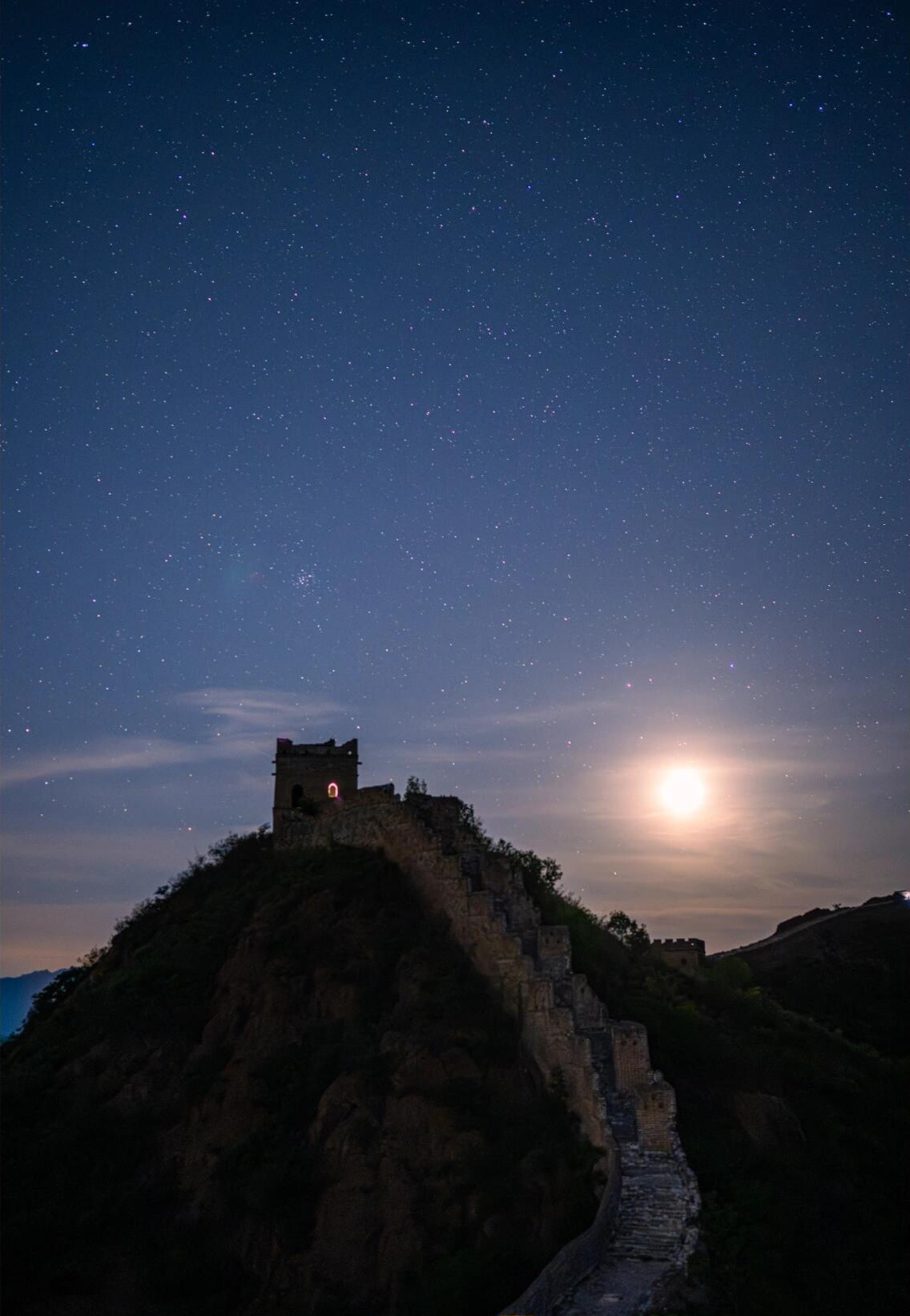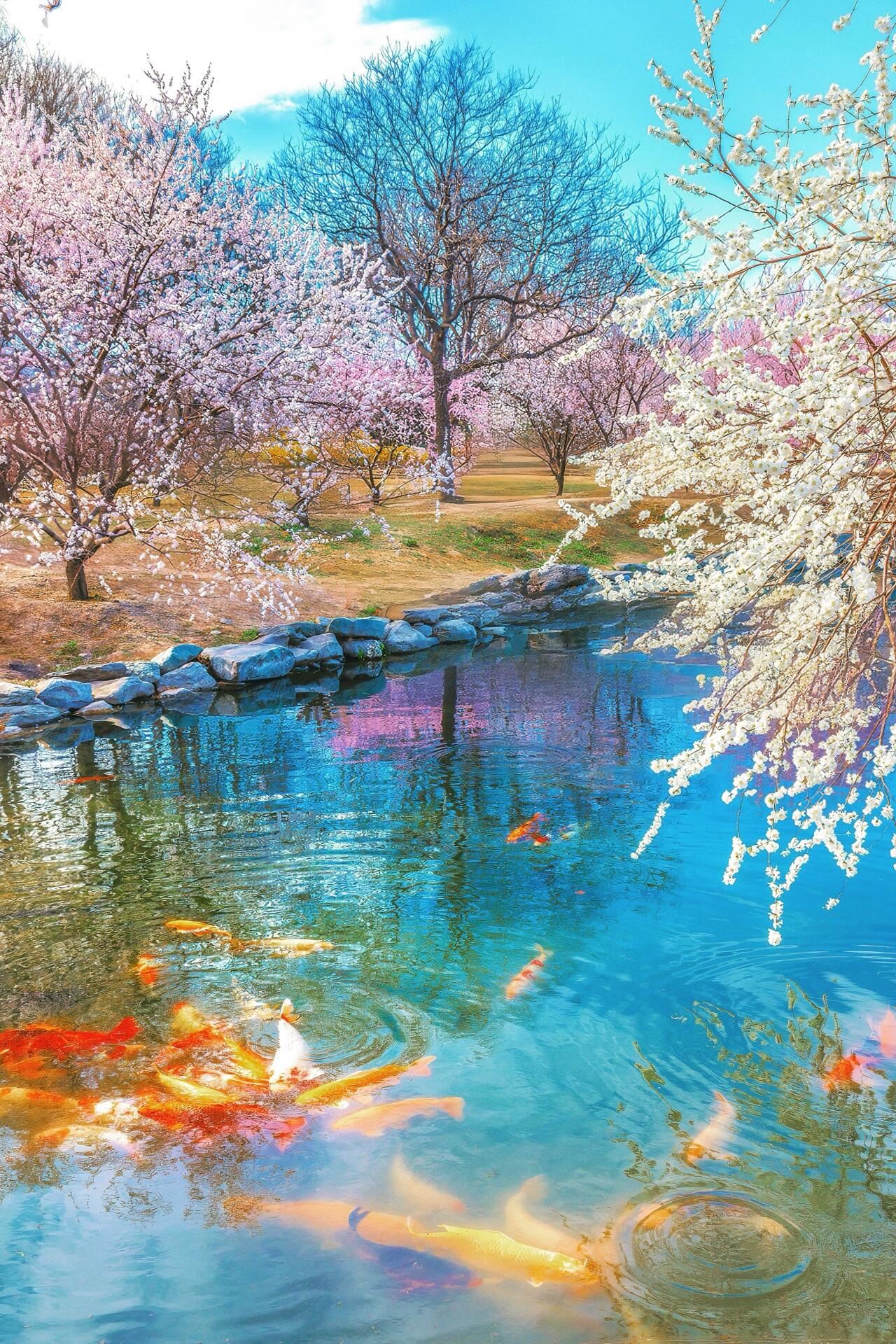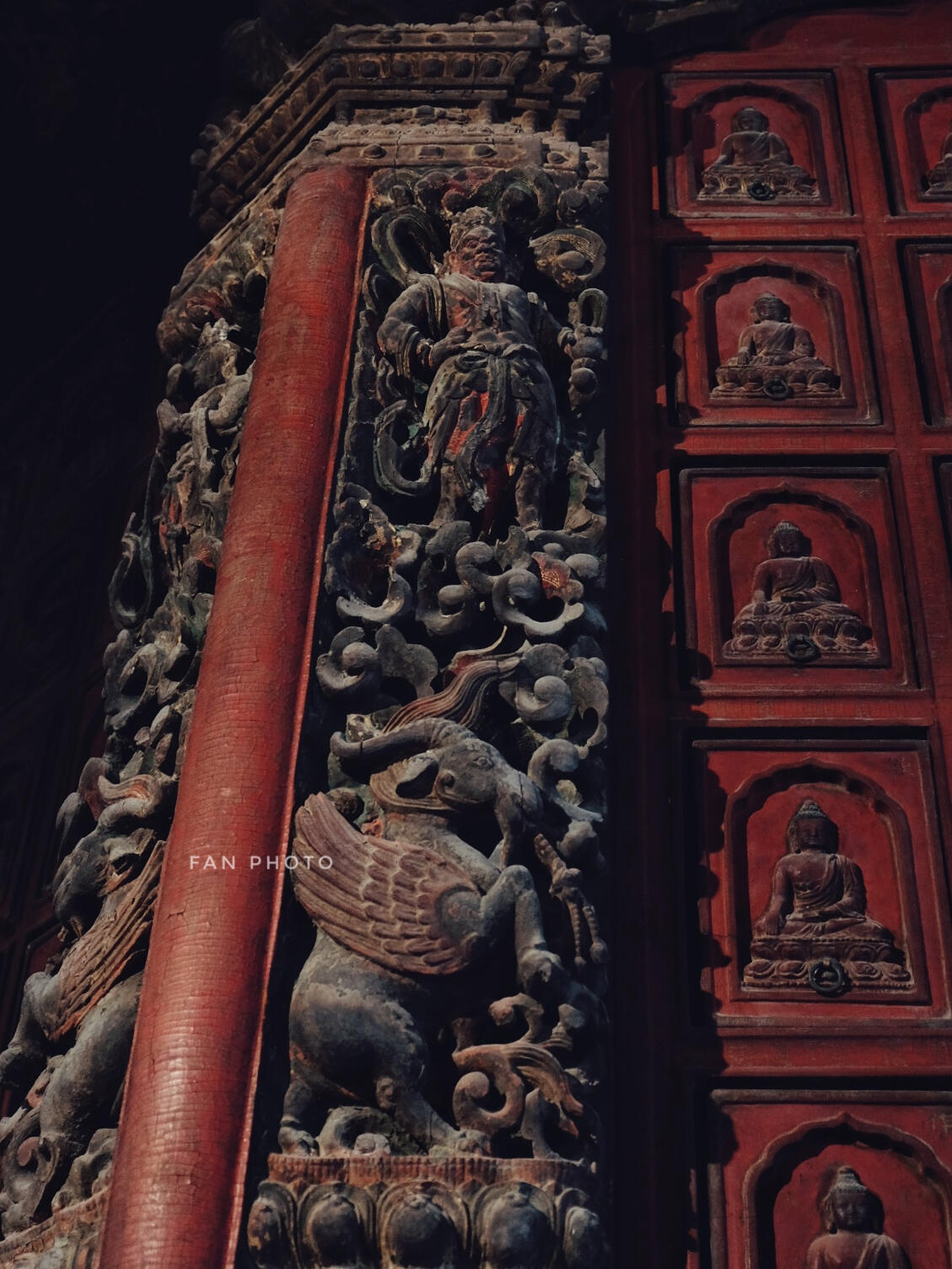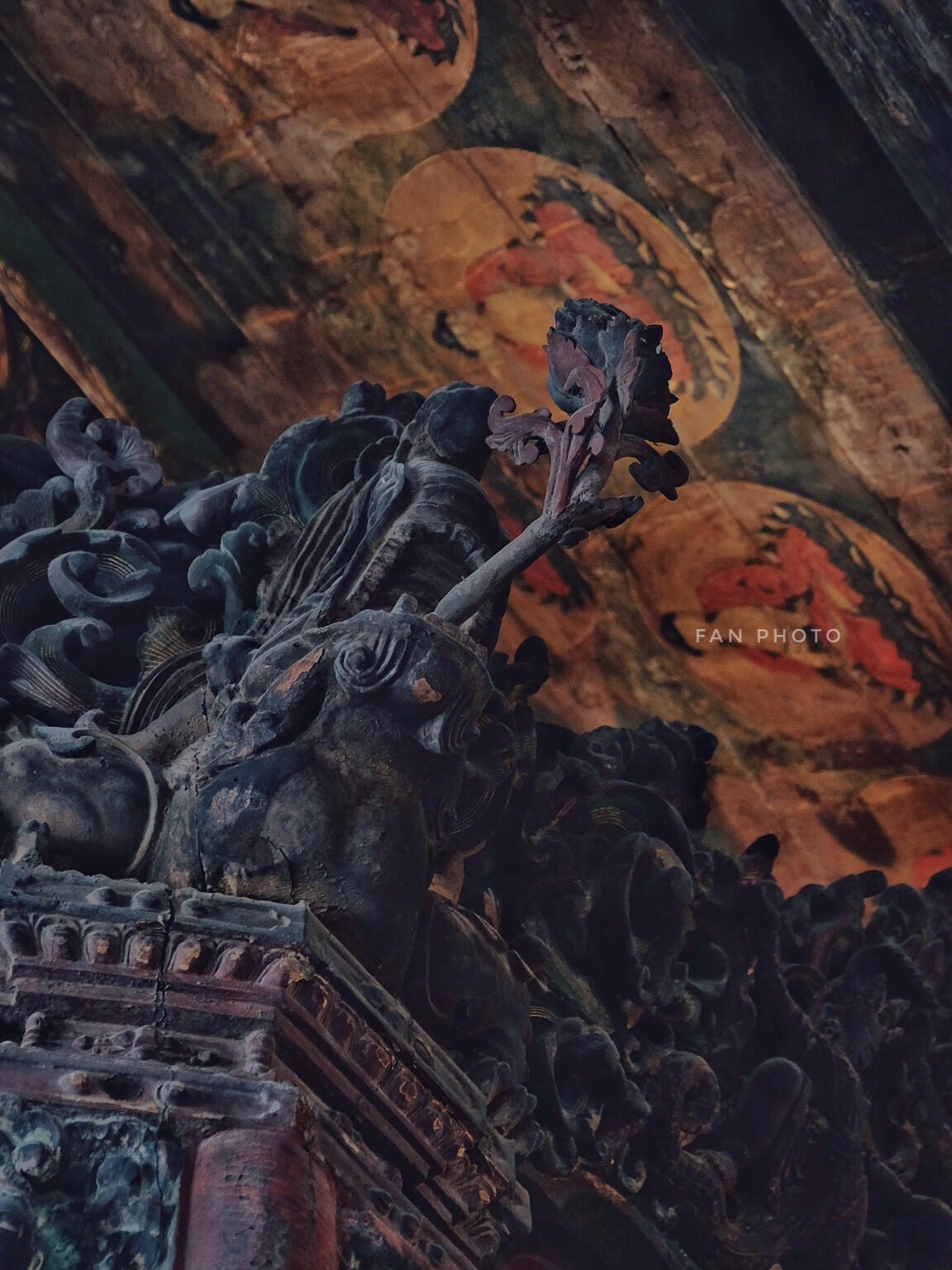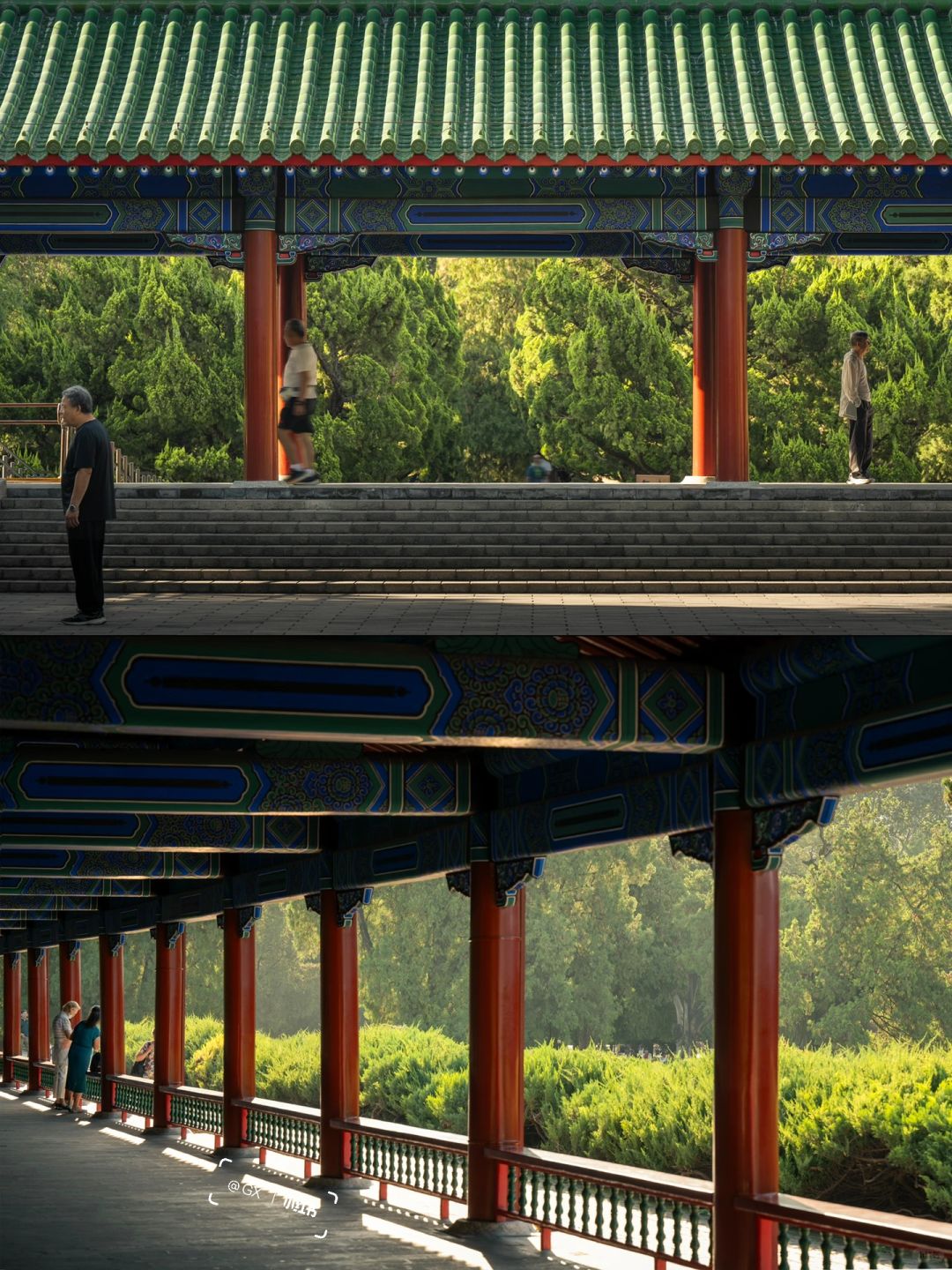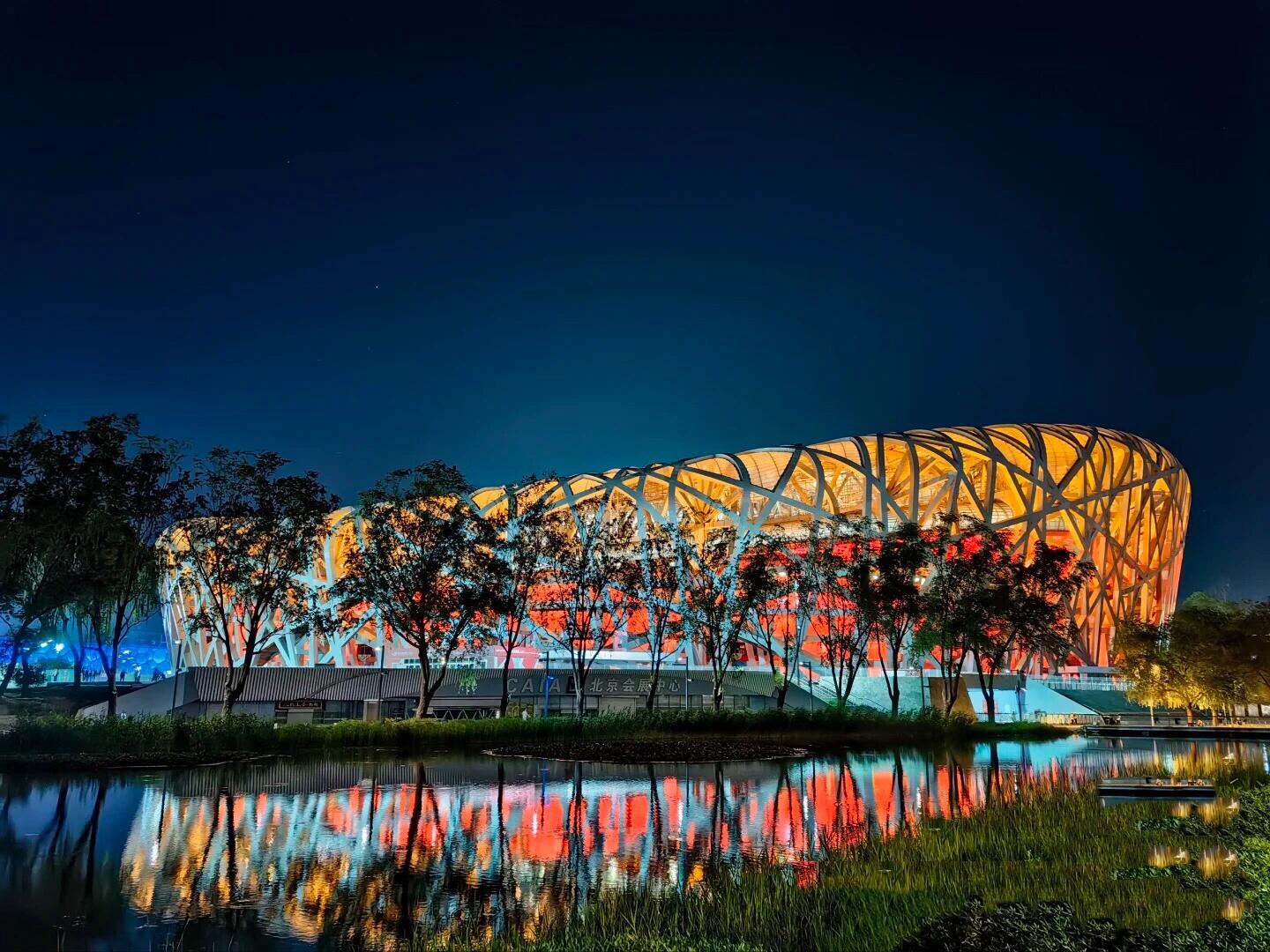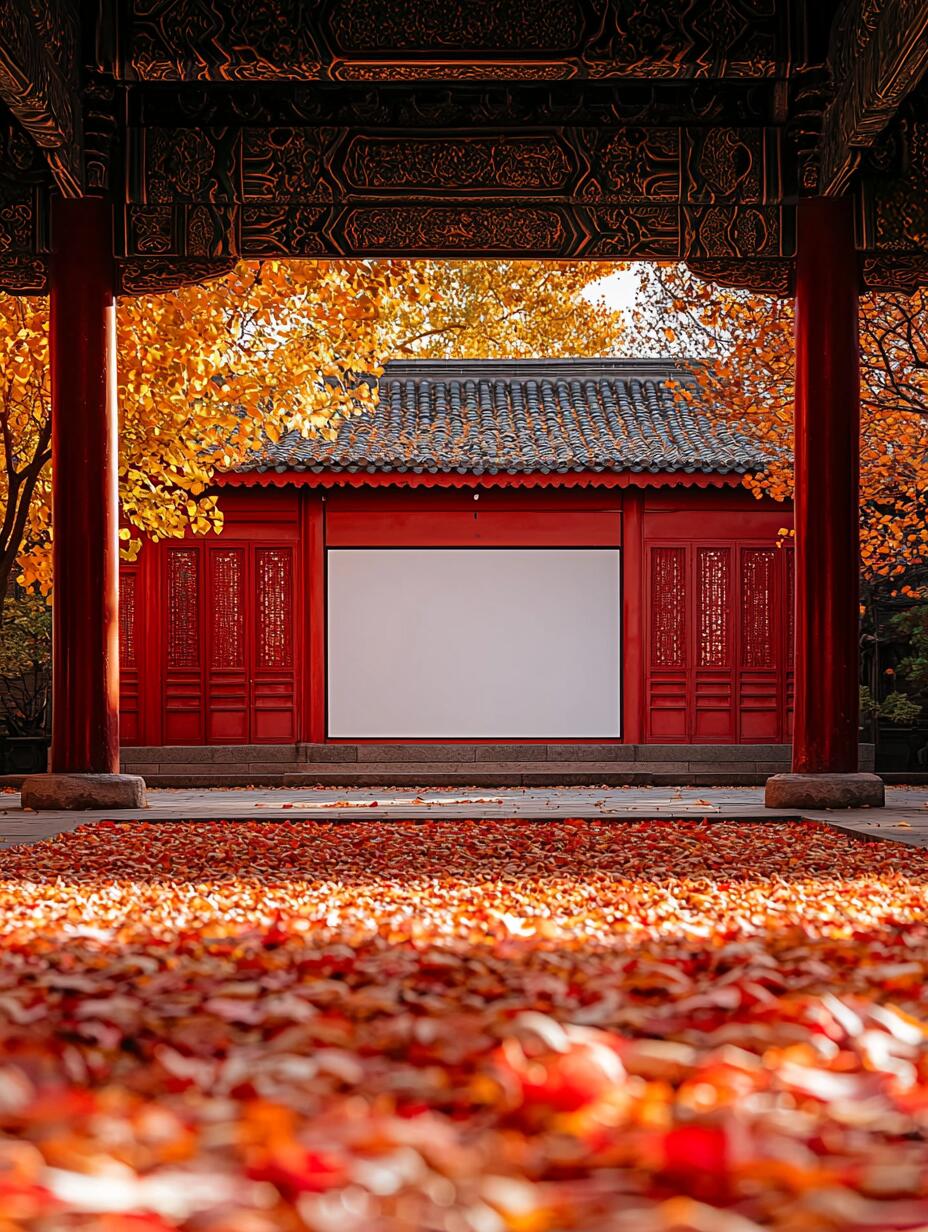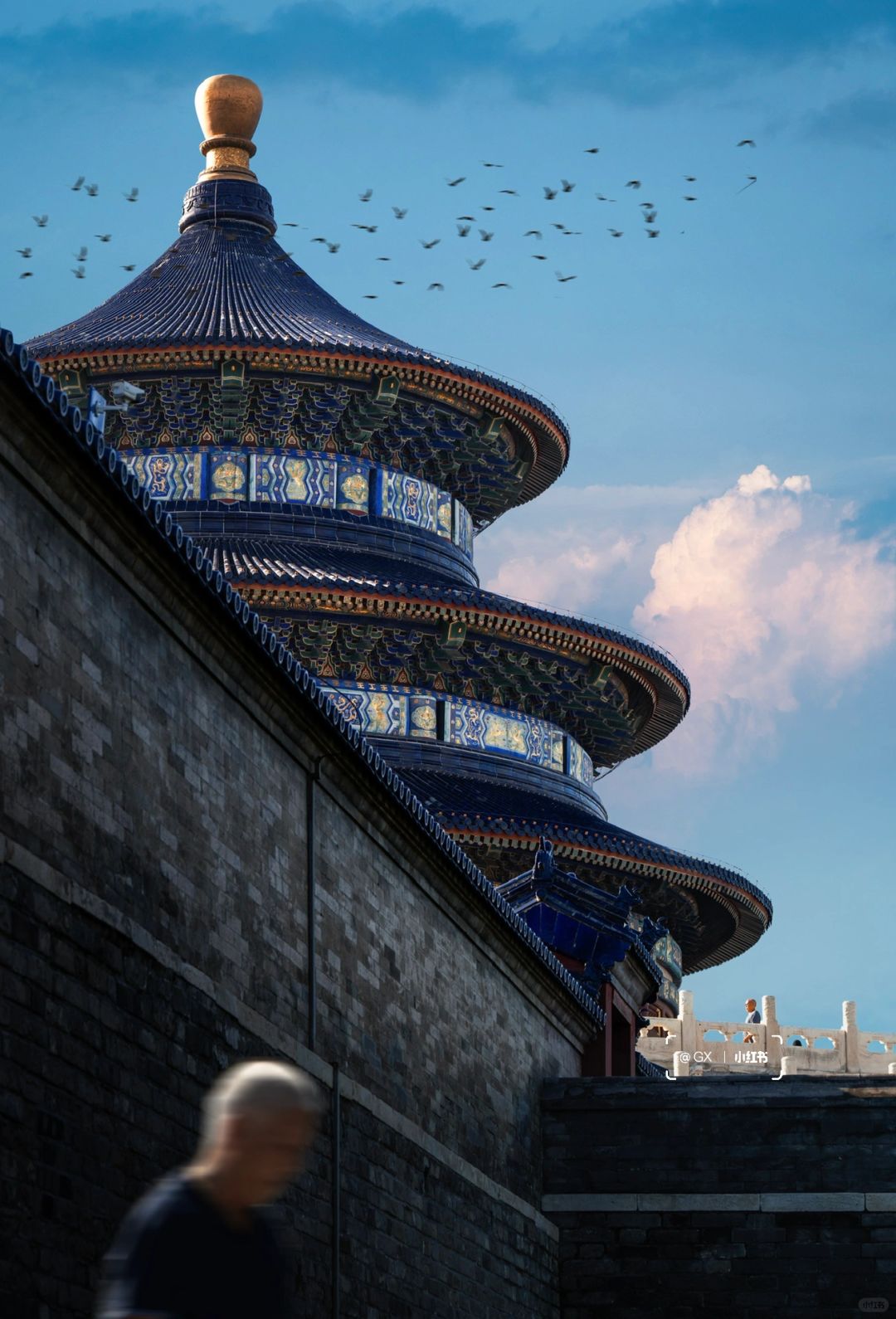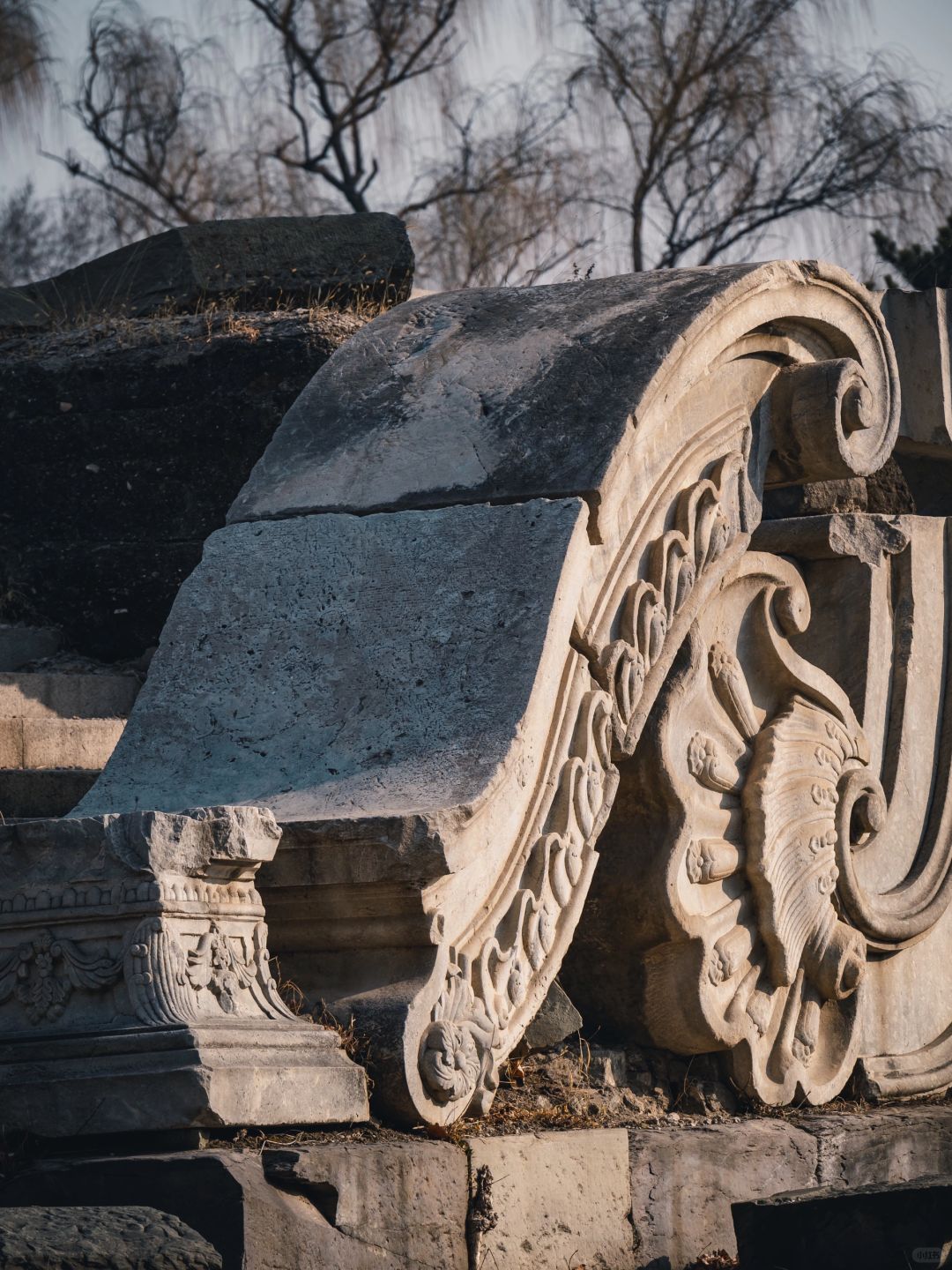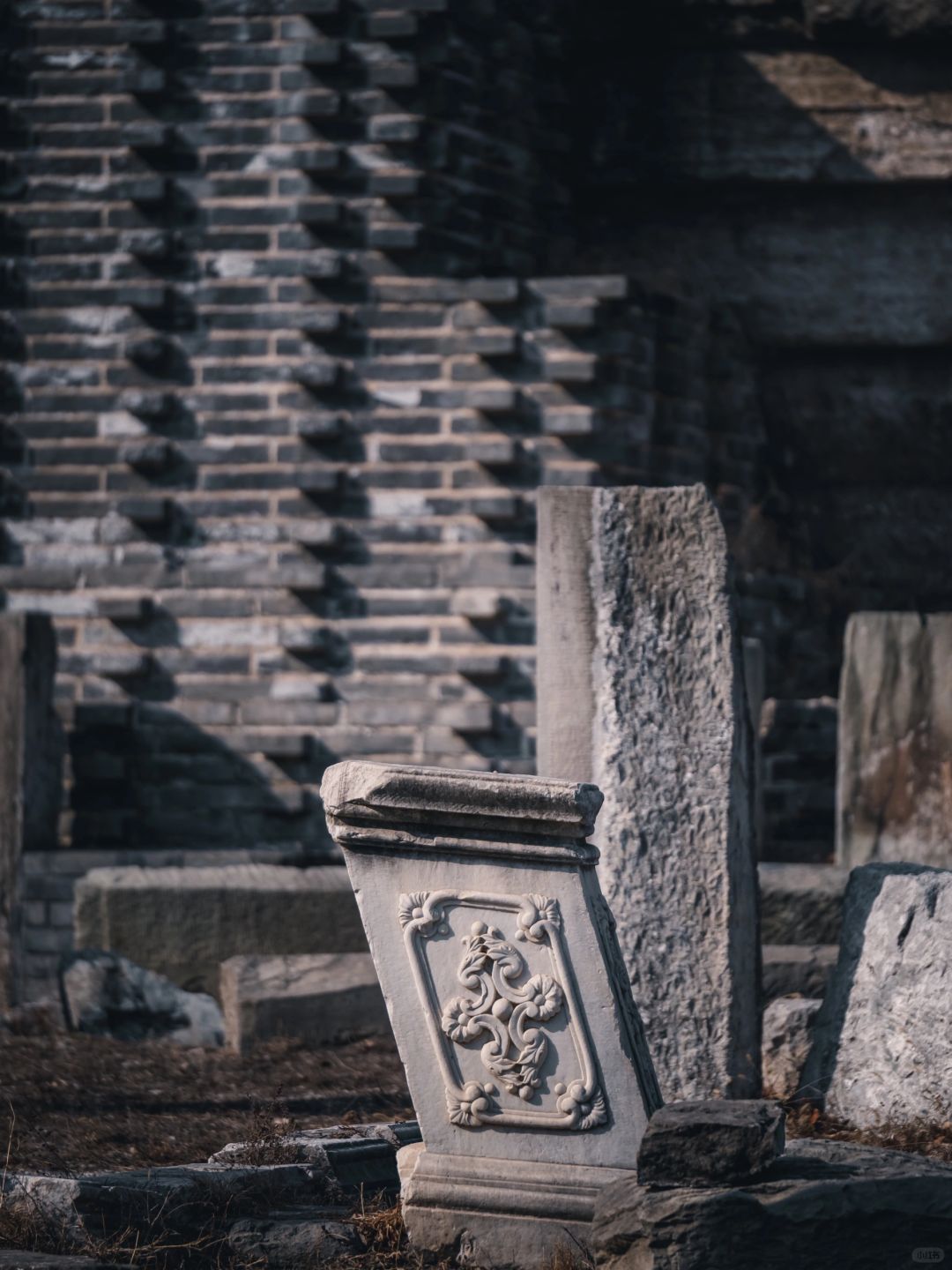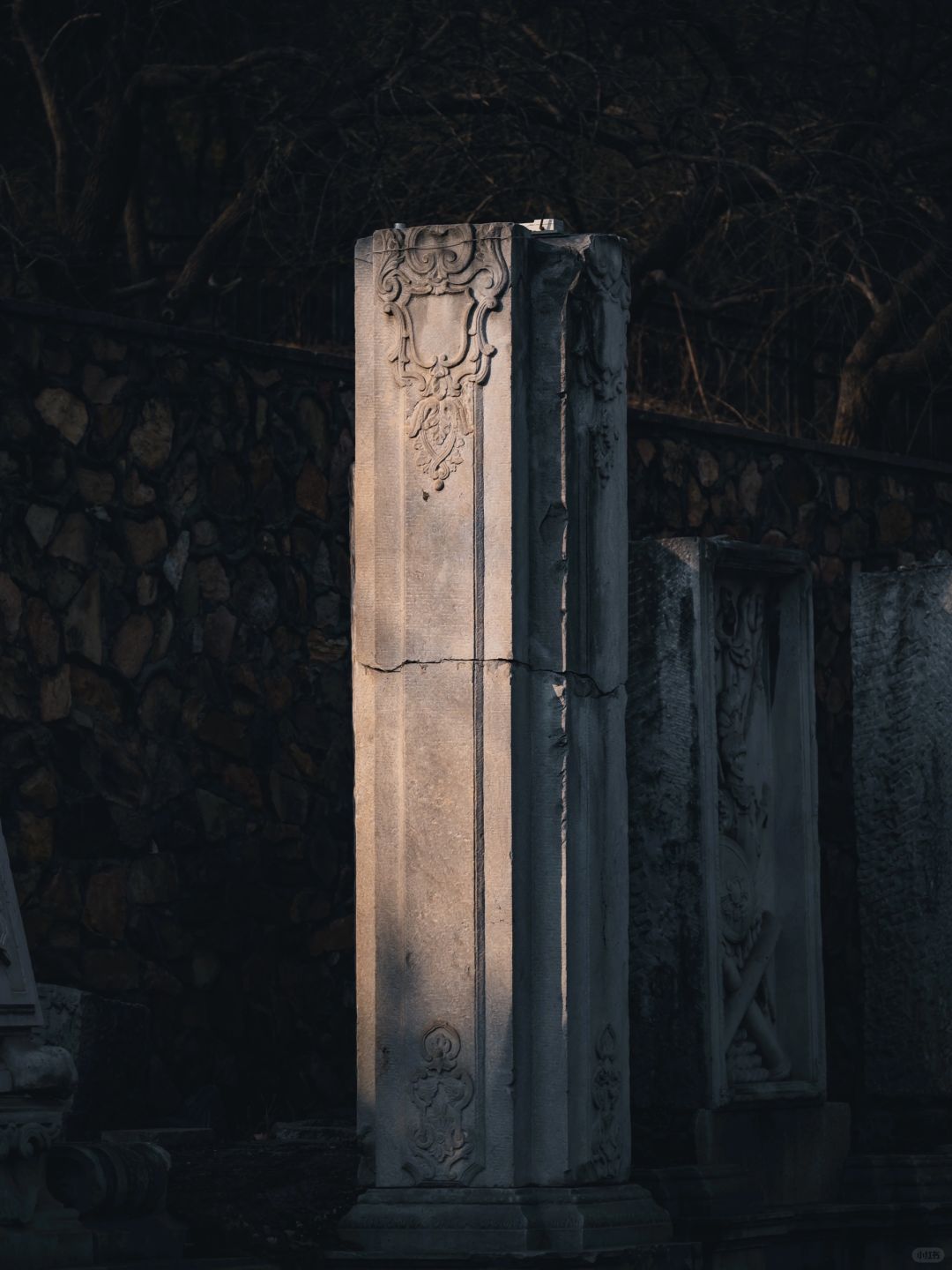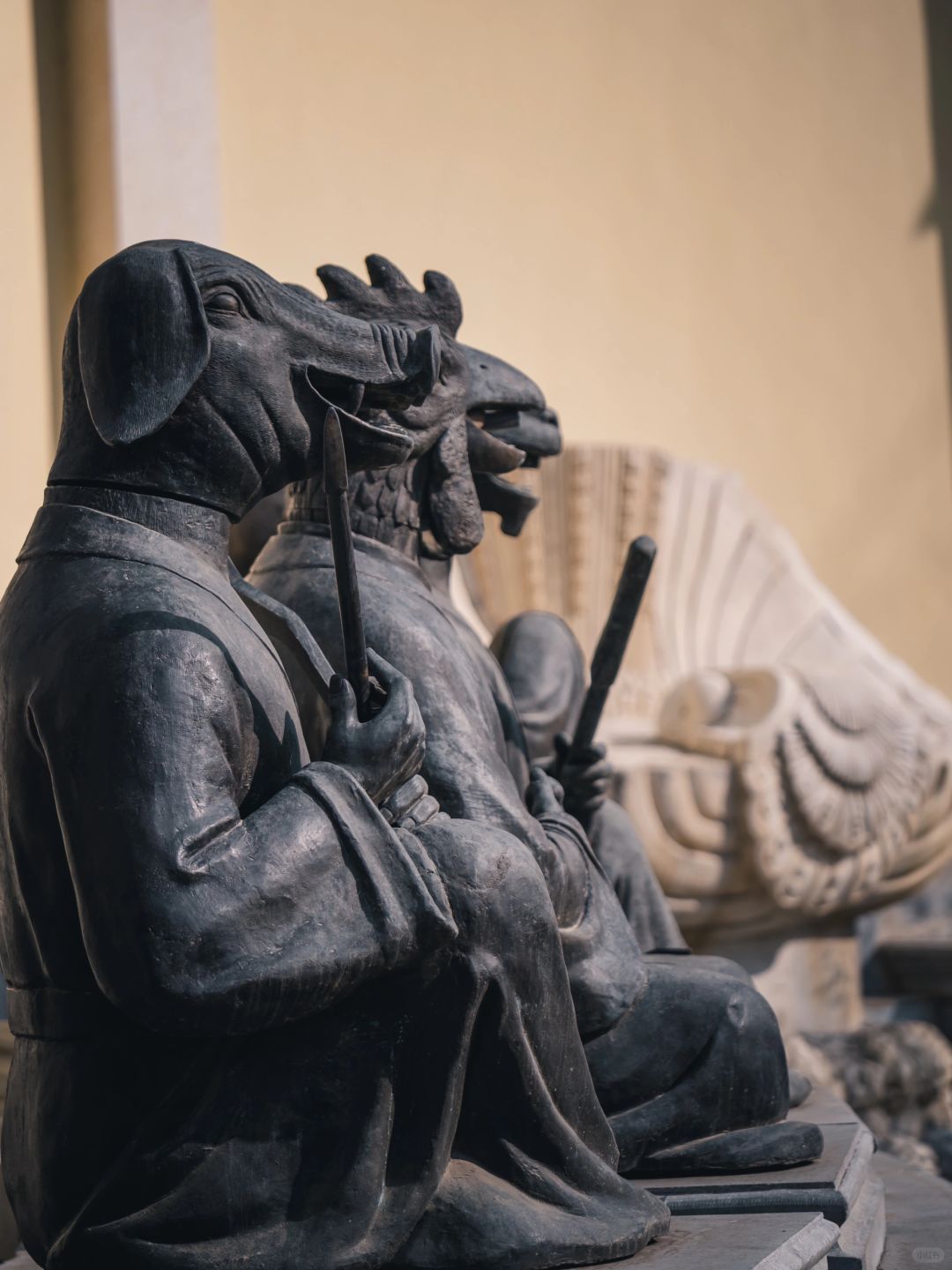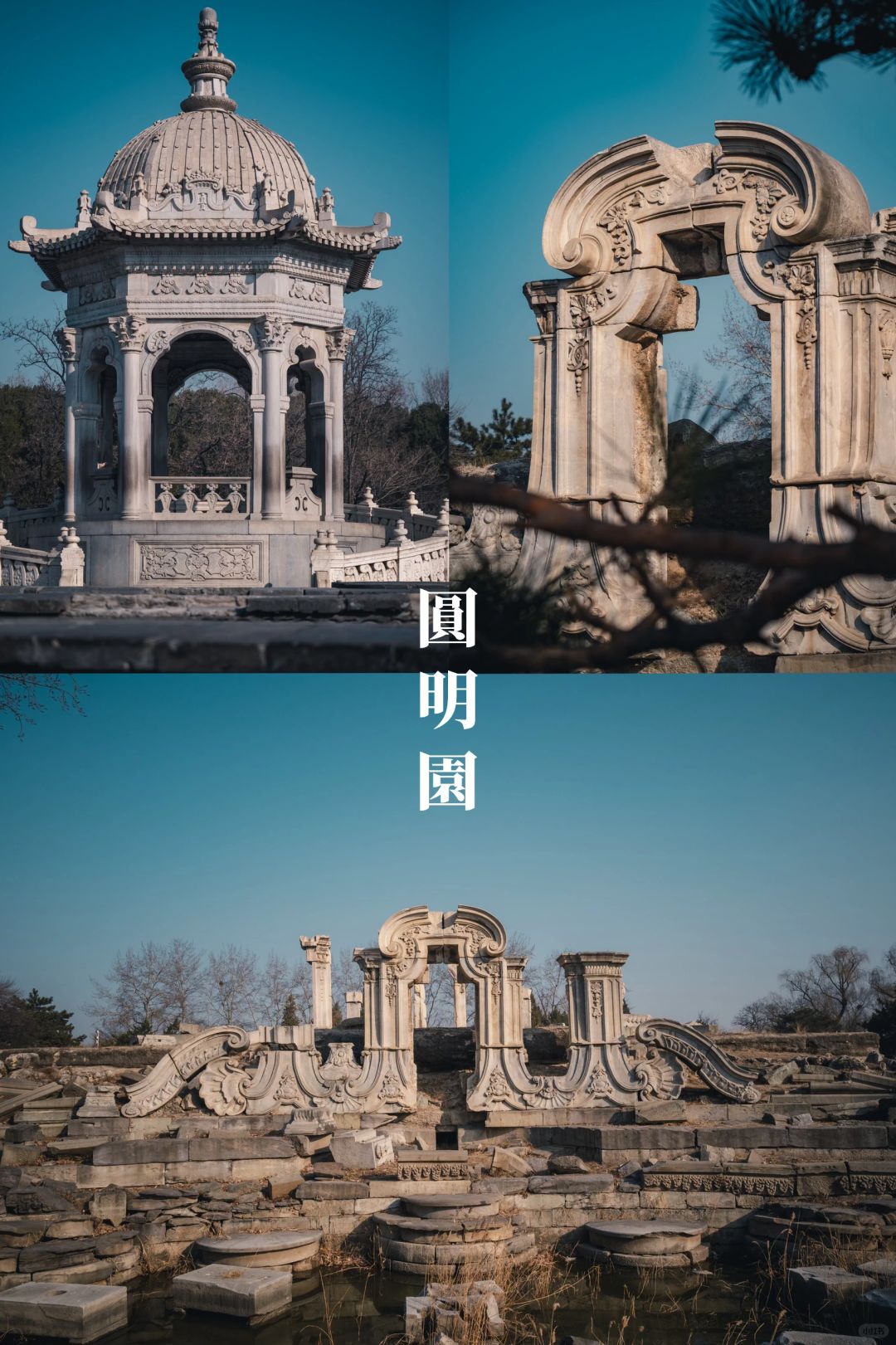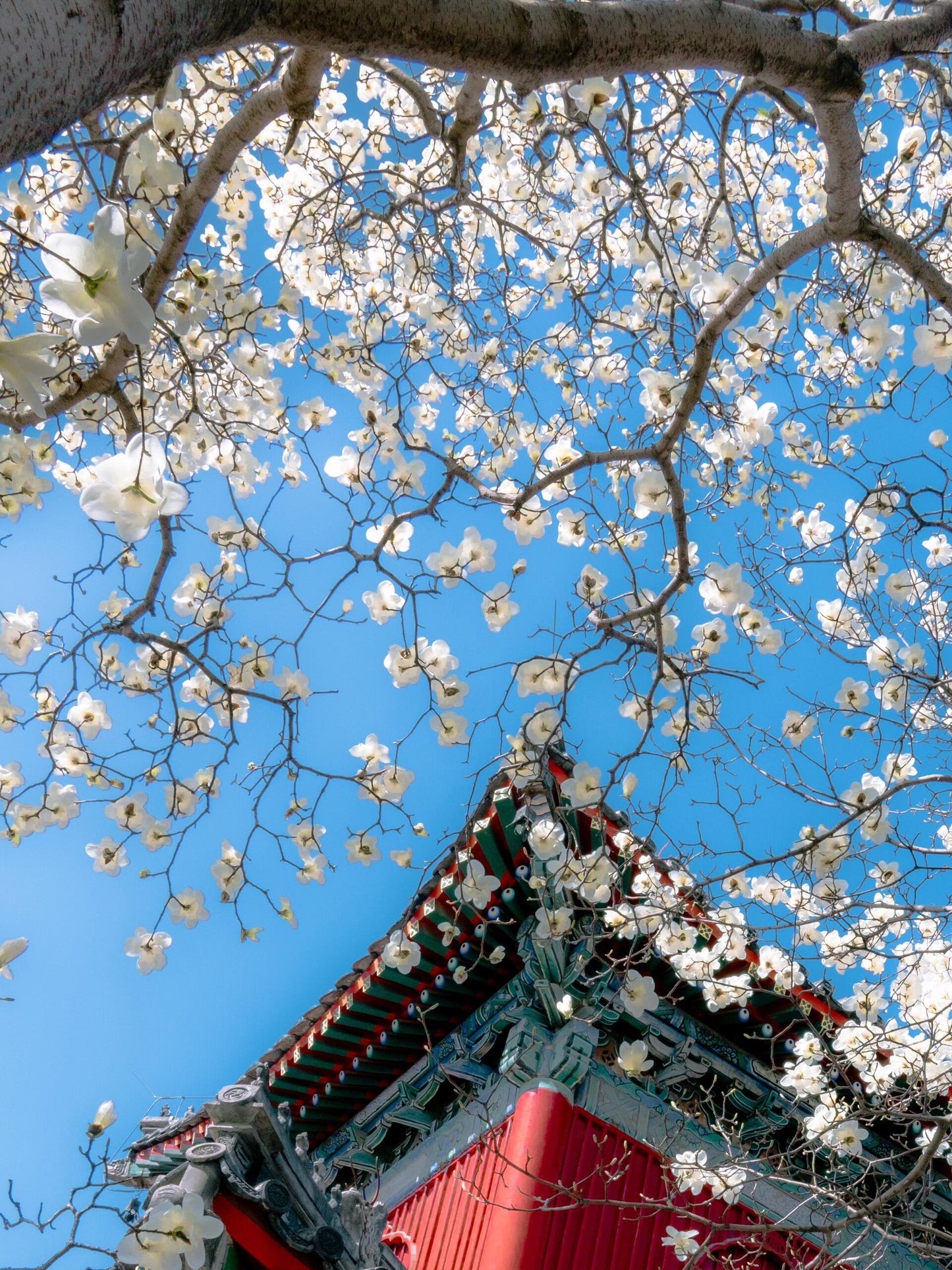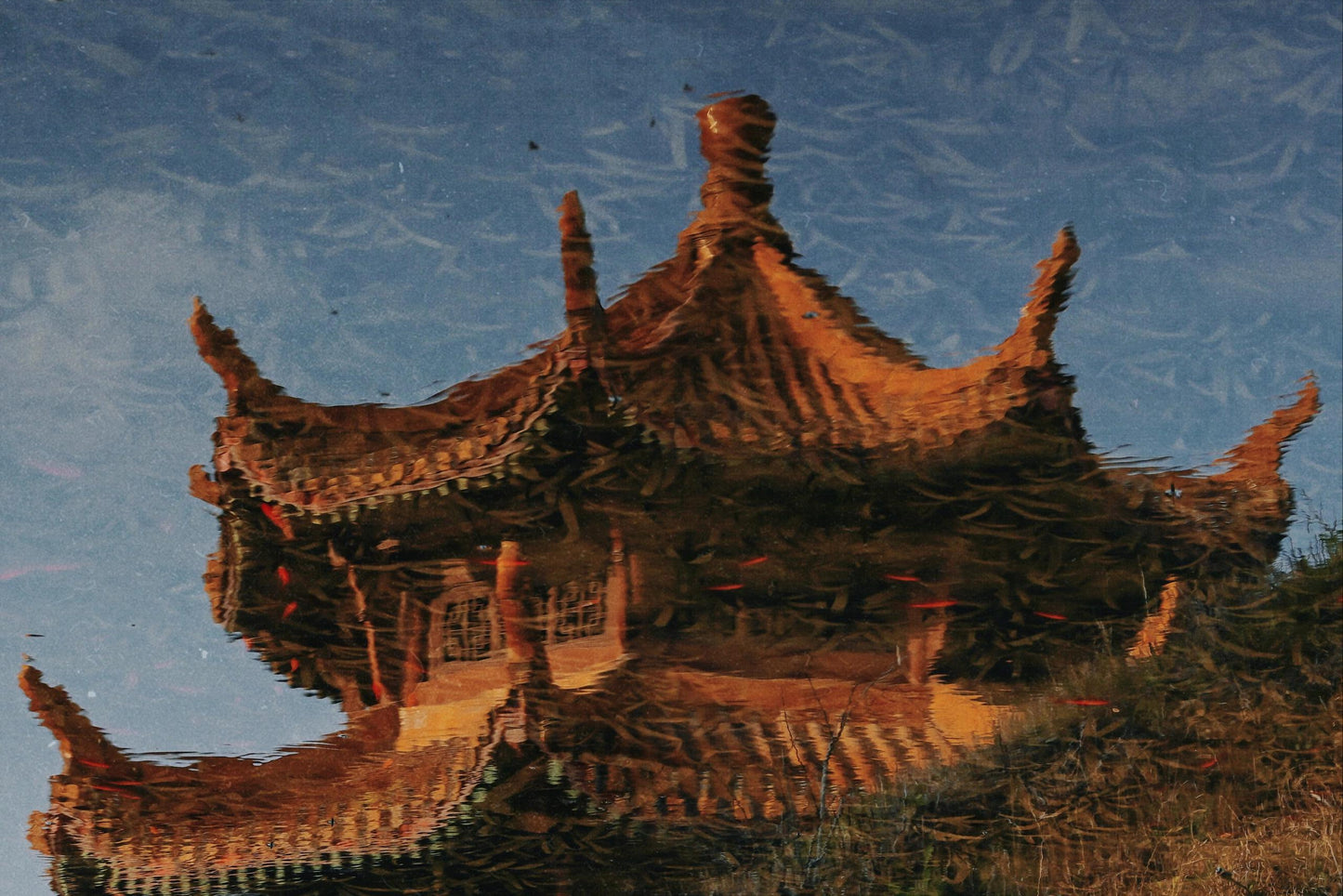HiTravelor
Beijing 5 Days 4 Nights Group Tour
Beijing 5 Days 4 Nights Group Tour
Couldn't load pickup availability
Beijing 5 Days 4 Nights Group Tour
🌸 Stay in Hotels Near 2nd Ring Road 🏨|Gold Medal Tour Guide 🏅|Book Early to Receive Museum Blind Box 🎁 · Enjoy Cherry Blossoms in Warm Spring 🌸|28-Person Group · Intangible Cultural Heritage Central Axis Route 🏛|Zero Shopping Stops 🛑🛍|Children Get Free Breakfast 🧒🍽|Includes Shenwumen Shuttle Bus 🚌 · Temple of Heaven Pass 🎫 · Olympic Landmarks 🏟|24-Hour Private Transfer from/to Airport/Train Station 🚗✈️🚄

This itinerary is for reference only. Please refer to actual details when booking 📅✅
Itinerary Introduction 📖🧳
Please arrive at the designated city one day before the tour starts.
Day 01
🚗 24-Hour [Private Car] Pickup from Airport/Train Station 🏠 Arrive at Hotel for Free Time or Rest 🛏

Meeting Point 📍
This product offers free pickup service: 🆓🚗
Free pickup available from: Capital International Airport, Daxing International Airport, Beijing Railway Station, Beijing East Station, Beijing Fengtai Station, Beijing North Station, Beijing South Station, Beijing Chaoyang Station, Beijing West Station 🛬🚉
Service Hours: All Day (Private Car) 🕐🚘
If Beyond Free Pickup Area, Please Go to Meeting Point on Your Own. Contact Customer Service If You Have Questions ☎️📩
Transportation 🚗🚌✈️
【Kind Reminder】💡
【24-Hour Airport/Train Station Transfer Instructions】:🕐✈️🚄
① Private car transfers only; one pickup and one drop-off per order at a single location. Multiple pickups or methods cannot be arranged under the same order. Please place separate orders if needed. 🚗📍
② Please include your flight/train number in the order remarks if you need the transfer. Otherwise, leave it blank. 🛫🚆
③ Pickup/drop-off locations include: Capital/Daxing Airport, Beijing Station, Beijing South Station, Beijing West Station, Beijing Chaoyang Station, Beijing Fengtai Station, Beijing North Station 📍✈️🚉
④ Maximum waiting time for pickup is 40 minutes ⏱🚗
【Contact Instructions】📞📩
The tour guide/butler will contact you by 21:00 the day before departure. Please check messages or answer calls from the tour staff. If you haven’t heard from them by 21:00, please contact Ctrip in time. Thank you! 📱📲
【Itinerary Arrangement Instructions】📝📅
This tour offers 3-day, 4-day, 5-day, and 6-day options. Shared parts of the itinerary will be combined with the same vehicle. As the Forbidden City/museums are closed on Mondays and most sites require advance reservation with limited availability, the itinerary will be arranged based on reservation results. The order of visits may change accordingly. 🏛📆🎟
For seasonal or extra complimentary offers, please refer to the product photo descriptions. 🎁🖼
【Hotel Information】🏨🔑
① Upon arrival at the hotel, please check in at the front desk. If a deposit is required, please pay it yourself. For questions, contact the hotel front desk or the tour guide/butler. Standard check-in time is after 14:00. If you arrive earlier, you can store your luggage and explore nearby. 🧳🕑🌆
② Hotel room types cannot be specified. Thank you for your understanding. 🛏🙏
【Dining Information】🍽🍜
If the number of people is insufficient for group meals (lunch/dinner), the tour guide will refund the meal cost according to the standard. You may choose to dine on your own or pay the difference to arrange a group meal. 🍲💵👥
【Optional Paid Recommendations】Value-added tour package includes special performance 🎭 + Olympic sightseeing bus 🚌 + Old Beijing Courtyard (Yiluyuan) 🏠. Participation is voluntary based on your preference. ✅🎟
【Discounts】Seniors aged 60 and above can enjoy seasonal ticket discounts with valid ID (ID card/passport/senior certificate).
• Peak season (Apr 1 – Oct 31): ¥100 off per senior
• Off season (Nov 1 – Mar 31): ¥60 off per senior
• Ages 12–18: Book as adult, refund ¥80/person
• Under 12: Book as child, price shown is final, no refund
• Disability and active military ID holders receive the same benefits as seniors. 🎫🧓🎖
Please read the above information carefully. These terms and benefits are provided upfront to help you make an informed booking. 📘✅
12:00 🕛 Lunch 🍱
Adult: Meal not included · Child: Meal not included 🚫🍽
Meal time: Approximately 30 minutes ⏱🍴
18:00 Hotel Check-in 🏨
Beijing Guantong Jianhui Hotel, or Beijing Go Inn 5L Hotel, or Grand Skylight Hotel Royal Beijing,or Beijing Jintai Xizhao Hotel, or Qiuguo Hotel (Beijing West Railway Station Liuliqiao East Metro Station), or Beijing Business Club Hotel
One of the above hotels will be arranged for your stay. Check-in begins at 14:00. Please bring valid ID documents for all guests and check in at the front desk. Kindly pay attention to the hotel’s free and paid services, as well as other notices. Wishing you a comfortable rest. If you arrive earlier, you may store your luggage and explore the area freely. 🛎🧳🌆
18:30 Dinner 🍽
Adult: Not included · Child: Not included
(Self-arranged meal, enjoy as you like)
Day 02
❤ Tiananmen Square 💐 Chairman Mao Memorial Hall (Exterior) · National Museum of China (Exterior) · Monument to the People’s Heroes · Tiananmen Gate Tower (Exterior) · Great Hall of the People (Exterior) 🚩 Forbidden City (includes earphones + shuttle to Shenwumen Gate) 🌤 Temple of Heaven Pass (includes Hall of Prayer for Good Harvests & Echo Wall) 🚋 Free time at Qianmen Street · Stroll along the century-old avenue


Full Day Activities 🌞
【The Forbidden City 🏯】
Limited to 30,000 visitors per day, Forbidden City tickets are in high demand all year round. If you plan to travel soon, please book early to avoid missing out. Tickets go on sale at 8:00 PM, 7 days in advance. We’ll do our best to secure tickets as early as possible! If we are unable to get tickets, your guide will refund the ticket cost on-site and adjust the schedule to allow for free activity time instead. 🎫❗
07:30 Breakfast 🥣
Adult: Included · Child: Included
Enjoy breakfast at the hotel.
Meal Duration: Around 30 minutes
08:00 Attractions / Sites 🏛
Tiananmen Square (No ticket required) 4.8/5
Located in the heart of Beijing, Tiananmen Square measures 880 meters north to south and 500 meters east to west, covering 440,000 square meters. It can hold up to one million people for grand gatherings. From north to south along Beijing’s central axis, you’ll see the national flagpole, the Monument to the People’s Heroes, Chairman Mao Memorial Hall, and Zhengyangmen Gate Tower.
On October 1, 1949, the founding ceremony of the People’s Republic of China was held grandly in Tiananmen Square. The PRC was born, marking a brand-new chapter in China’s history.
Monument to the People’s Heroes (No ticket required) 4.8/5
Located at the center of Tiananmen Square, it’s one of the most iconic structures and a symbol of the republic. Built from granite and white marble, it stands nearly 40 meters tall and consists of the stele body, base, and Xumi pedestal.
The front bears the inscription “Eternal Glory to the People’s Heroes,” while the back holds a commemorative text.
Outer Golden Water Bridge (No ticket required) 4.7/5
Built during the Ming Dynasty (Yongle era), the Golden Water Bridges cross over the Golden Water River and connect Tiananmen Gate with the square. There are inner and outer sections of the bridges.
Tiananmen Gate Tower (Exterior) 4.7/5
Located at the intersection of Beijing’s central axis and Chang’an Avenue, it was first built in 1417 and originally named “Chengtianmen.” Renamed to “Tiananmen” in 1651, it served as the main gate to the imperial city during the Ming and Qing dynasties.
On October 1, 1949, Chairman Mao declared the founding of the PRC from this very tower, establishing it as a national symbol. It now bears the national emblem and slogans, and was designated a national cultural heritage site in 1961.
National Museum of China (Exterior) 4.7/5
The National Museum of China is the institution representing the nation in collecting, researching, exhibiting, and interpreting significant cultural artifacts that reflect the essence of excellent traditional Chinese culture and advanced socialist culture. It is a national hall of historical, cultural, and artistic heritage, often referred to as the cultural living room of China.
The museum currently holds more than 1.4 million artifacts, including ancient relics, modern and contemporary items, rare books, and artworks. Among these, 815,000 are ancient relics, 340,000 are modern and contemporary items, and over 240,000 are rare books and manuscripts. There are nearly 6,000 top-grade national treasures.
Since the 19th National Congress of the Communist Party, the museum has increased efforts to collect representative artifacts of contemporary culture. It openly solicits collections from the public, acquiring an average of about 50 sets of ancient artifacts and over 1,000 modern and contemporary cultural items and artworks annually.
The museum features a three-part exhibition system consisting of permanent displays, special exhibitions, and temporary exhibitions, creating a well-structured and diverse exhibition network.
Among them, Ancient China, The Road to Rejuvenation, and its New Era extension are core permanent exhibitions. They serve as key platforms for promoting traditional Chinese culture and socialist values, and for cultivating core socialist values.
Special exhibitions are mainly based on the museum’s collections and include over ten themes such as Chinese ancient bronzes, Buddhist statues, jade, porcelain, classic modern artworks, and African wood carvings.
Temporary exhibitions are either independently curated or imported through collaborations, covering a wide range of topics including history, artifacts, archaeology, art, regional culture, and international exchange. Over 40 exhibitions are held annually.
The museum possesses rich research resources, a solid academic foundation, and strong research capabilities, making it a leading force in the development of China’s museum sector.
Since 2018, guided by the principle of “not necessarily owning, but focusing on exhibiting; open cooperation and mutual benefit,” the museum has built strategic partnerships with domestic and international cultural and academic institutions. It has jointly conducted research, hosted artifact exhibitions and forums, launched a postdoctoral program, and led the establishment of two international organizations: the BRICS Museums Alliance and the Silk Road Museums Alliance, striving to play a greater role in promoting core socialist values, strengthening cultural confidence, encouraging global cultural exchange, and building a culturally strong socialist nation.
Travel: Approx. 15 km / Around 60 minutes
Activity Duration: Around 1 hour
09:30 Attraction/Site: The Palace Museum (including main entrance ticket) 4.8/5
The Forbidden City, also known as the Imperial Palace, was the royal residence during the Ming and Qing dynasties. It stands as a symbol of ancient China. When you walk through its majestic courtyards and towering walls, you can truly feel its past glory.
▲ Its long history has preserved a vast array of magnificent buildings and countless cultural relics, which are the main highlights for visitors today.
▲ Classic Landmark: The corner towers of the Forbidden City are multi-eaved structures with a unique architectural style located in Beijing’s Dongcheng District. Their three-tiered roofs combine hip and gable elements, forming a structure with nine main ridges, hence the name “Nine-Ridge Hall.”
▲ The sundials in the palace are categorized by their mechanisms into equatorial and horizontal types. The equatorial sundial requires a time dial, a latitude arc, and a gnomon. For accurate timekeeping, the dial must be parallel to the equator and the gnomon aligned with Earth’s axis.
▲ The Treasure Gallery is located in the Palace of Tranquil Longevity and houses an exceptionally rich collection of treasures, including Buddhist artifacts, jewelry, daily utensils, and ornamental items. Highlights include a 14 cm tall red coral lion, a 130 cm long Eastern pearl court necklace, and a gold seal reading “Treasure of Obedience to Heaven.”
▲ The Clock Gallery, located in the Hall of Ancestral Worship, showcases mostly British-made timepieces, along with pieces from France and Switzerland. In addition to timekeeping, these clocks feature moving figures, birds, animals, and flowers. Notable items include the Gilded Copper Writing Man Clock, the Gilded Copper Enamel Gourd Clock featuring fishermen, farmers, and scholars, and the Rhinoceros Clock carrying a rotating flower runner.
Warm Tips:
1.There are no parking facilities around the Forbidden City. Temporary drop-off/pick-up areas may require walking and waiting. To save your energy, a complimentary shuttle will be arranged outside the Gate of Divine Might (Shenwumen) after your visit.
2.The Forbidden City is closed on Mondays. If your tour falls on a Monday, the itinerary will be adjusted accordingly.
3.Real-name ticketing with a second-generation ID card is required. Without valid ID, entry is not allowed. For children without IDs, a household registration book or passport is needed.
4.The main entrance ticket is included, but tickets for special exhibition halls are not.
5.This day includes a lot of walking and a later lunch, so it’s recommended to bring some snacks.
Travel: Approx. 10 km / Around 30 minutes
Activity Duration: Approx. 2 hours and 30 minutes
12:30 Lunch
Adults: Meal included, Children: Meal included
Featured local meal at one of the following randomly arranged restaurants: Donglaishun, Quanjude, or Bianyifang
Meal Standard: 50 CNY per person
Meal Time: Around 45 minutes
13:30 Attraction/Site
Temple of Heaven Park (Admission Included) 4.7/5
The Temple of Heaven was the exclusive altar used by Ming and Qing emperors to worship Heaven, pray for rain, and request good harvests. It is a renowned ancient Chinese architectural site. The northern part of the altar is circular while the southern part is square, symbolizing the traditional concept of “heaven is round, earth is square.” The park is divided into an inner and outer altar, with well-known structures like the Hall of Prayer for Good Harvests and Echo Wall located in the inner altar.
Quick Overview of the Area
The inner altar is divided into north and south by palace walls. The northern section, called the “Altar of Prayer for Grain,” was where emperors held ceremonies in spring to pray for favorable weather and abundant harvests. Major structures include the Hall of Prayer for Good Harvests, the Imperial Hall of Heaven, East and West annex halls, the Gate of Prayer for Good Harvests, the Divine Kitchen, the Pavilion for Animal Sacrifice, and the Seventy-Two Corridor.
The southern section is the “Circular Mound Altar,” an open-air, three-tiered circular stone platform where emperors held ceremonies on the Winter Solstice to worship Heaven. Key structures include the Circular Mound, the Imperial Vault of Heaven with its annex halls, the Divine Kitchen, the Three Treasury Rooms, and the Pavilion for Animal Sacrifice.
Connecting the two altars is a 360-meter-long, 28-meter-wide, and 2.5-meter-high raised pathway made of bricks and stones called the “Sacred Way” or “Danbi Bridge.” It symbolizes the long journey to the heavenly court.
The Ingenious Design of the Three Echo Stones
Visiting the Temple of Heaven isn’t just about admiring the stunning architecture and imagining the grandeur of imperial rituals—ingenious features like the Echo Wall and the Three Echo Stones also leave visitors in awe of ancient Chinese ingenuity.
On the stone path from the Hall of the Imperial Vault of Heaven to its main gate, three specially placed stones—called the “Three Echo Stones”—can be found. When the gates and windows are closed and there are no obstacles nearby, clapping on the first stone yields one echo, two echoes on the second, and three on the third.
Understanding the Worship of Heaven
Simply touring the site might not give a clear picture of imperial Heaven-worship ceremonies. Fortunately, the Ritual Exhibition Hall in the west annex of the Hall of Prayer for Good Harvests explains the evolution of these rituals in detail. It especially highlights Qing Dynasty ceremonies, complete with ritual vessels and procedural displays. Of particular note is the Illustrated Imperial Procession of Qianlong’s 13th Year, the first depiction of a Chinese imperial cortege—a must-see!
The Music and Dance of Heaven Exhibition Hall, located in the east annex, showcases instruments like chime bells and stone chimes used in Qing-era Zhonghe Shaoyue court music. Paired with explanatory texts and images, the display offers a comprehensive look at the history, organization, and performance practices of the ceremonial music played during rituals, giving visitors a vivid understanding.
Echo Wall (Admission Included) 4.5/5
The Echo Wall is a circular wall surrounding the Imperial Vault of Heaven. It stands 3.72 meters high, 0.9 meters thick, and has a circumference of 204.728 meters. The wall is made of finely polished bricks from Linqing, Shandong, with seamless joints and is topped with blue-glazed tiles.
Thanks to the precise curvature and the wall’s smooth finish, it acts as an excellent surface for sound reflection—sound waves can travel along the wall in continuous reflection.
If two people stand at opposite ends of the wall, one on the east and the other on the west, and speak while facing the wall, their voices can travel more than 100 meters along the curve. The sound is clear and echoing—an acoustic marvel.
Hall of Prayer for Good Harvests (Admission Included) 4.8/5
The Hall of Prayer for Good Harvests is located in the northern section of the Temple of Heaven Park and is also known as the Altar of Prayer for Grain. It was used to hold grand ceremonies in early spring to pray for abundant harvests. Built in the 18th year of the Yongle Emperor’s reign in the Ming Dynasty (1420), it is the earliest structure in the Temple of Heaven.
It was destroyed by lightning in the 15th year of Emperor Guangxu’s reign (1889), and the structure we see today is a faithful restoration of the original.
The Hall of Prayer for Good Harvests is widely recognized as the iconic symbol of the Temple of Heaven—just seeing it evokes thoughts of the temple and of Beijing.
The altar combines both altar and hall in a circular structure, in accordance with the ancient concept of “worshipping Heaven beneath a roof.”
The altar base consists of three levels and is 5.6 meters high. The hall above is circular with a diameter of 32.7 meters and a height of 38 meters. It features a triple-eaved, cone-shaped roof topped with a gilded finial and covered with blue glazed tiles. Its layered design gives the building a majestic and elegant appearance.
Inside the hall are 28 giant nanmu (gold-thread cedar) columns arranged in circles: four in the inner ring represent the four seasons, 12 in the middle ring represent the 12 months, and 12 in the outer ring represent the 12 traditional Chinese hours and constellations.The beams and rafters are painted with intricate imperial patterns of dragons and phoenixes in rich colors.
In addition to the main altar, surrounding structures include the Imperial Hall of Heaven, the East and West Annex Halls, the Gate of Prayer for Good Harvests, the Divine Kitchen, the Pavilion for Animal Sacrifice, and the Long Corridor. In the square south of the corridor lie the “Seven Star Stones,” believed to have been placed during the reign of the Jiajing Emperor for spiritual protection.
Circular Mound Altar (Admission Included) 4.7/5
The Circular Mound Altar is located in the southern part of the Temple of Heaven and was built in the 9th year of the Jiajing Emperor’s reign (1530). It is also known as the Heavenly Altar or Worship Platform.The altar faces south and is encircled by red palace walls adorned with green glazed tiles, colloquially referred to as “Zi Walls.”
This was the place where emperors held the grand Winter Solstice worship ceremony. Key structures include the Circular Mound, the Imperial Vault of Heaven with its annexes, the Divine Kitchen, the Three Treasury Rooms, and the Pavilion for Animal Sacrifice. Auxiliary structures include the Garment Platform and the Lamp Tower.
The altar itself is a three-tiered circular platform symbolizing “round heaven.” It stands 5.17 meters tall, with nine steps on each of its four sides at each level, and is surrounded by finely carved white marble railings.
Travel Time: About 30 minutes
Activity Duration: About 1 hour and 30 minutes
16:00 Attraction: Qianmen Street (No Ticket Required) 4.6/5
Qianmen Street is located just south of central Beijing and has long been one of the city’s most famous commercial streets. Today, it’s home to a variety of restaurants, shops, and snack stalls from all over China—perfect for shopping, strolling, and sampling delicious local cuisine.
The architecture along the street is distinctly old-style, featuring traditional archways, vintage signs, and red lanterns, evoking the charm of old Beijing.
Suggested Walking Route
Visitors typically explore the pedestrian section of Qianmen Street, which runs about 800 meters from the outside of Zhengyangmen Archery Tower in the north to Zhushikou East Street in the south. It’s ideal for a relaxed walking tour.
Additionally, there is a sightseeing tram that runs along the pedestrian street. This vintage-style tram, known as the “Dangdang Car,” has a long history. The ride covers a few hundred meters and costs about 20 yuan, making it a fun experience especially for families with children.
In addition to Qianmen Pedestrian Street, the nearby alleys such as Dashilan and Xianyukou are also considered part of the greater Qianmen area and are ideal for exploring on foot as well.
Savor Traditional Cuisine like Peking Duck and Hotpot
One of the top things to do while visiting Qianmen Street is to enjoy traditional Beijing cuisine. Well-known restaurants such as Quanjude, Bianyifang, Donglaishun, and Liubiju can be found along the pedestrian street and in the nearby alleys. These spots offer classic dishes like Peking duck and lamb hotpot. Prices are standardized city-wide, so they aren’t more expensive than elsewhere—on the contrary, they’re often more authentic, making them worth trying.
In addition to large restaurants, there are many snack stalls and pastry shops along the street, such as Modern Popsicles, Beijing Old Yogurt, Daoxiangcun, and Duyichu. However, these tend to be a bit pricier than shops outside the tourist area. They’re fun to sample on the spot, but if you plan to buy some as souvenirs, it’s better to purchase them at other branches around the city.
You’ll also find international chains like Häagen-Dazs, Starbucks, and KFC along the street if you prefer familiar Western options.
Feel the Charm of Old Beijing Amid Historic Architecture
Beyond dining, Qianmen Street and the surrounding alleys are home to historic shops and buildings like Ruifuxiang, the Beijing Camera Factory, and the China Hat Culture Museum, all of which are open for visitors to explore.
There are also various teahouses in the area that host traditional performances like cross-talk (xiangsheng) and storytelling (pingshu). Strolling into these hidden alleys is a great way to immerse yourself in Beijing’s cultural heritage.
Whether snapping photos of old architecture, vintage shop signs, archways, or red lanterns, every frame is filled with the unique charm of historic Beijing.
[Free Time]
Qianmen Street boasts a long history—emperors used to pass through it on their way to perform rituals at the Temple of Heaven and the Altar of Agriculture.
Activity Duration: About 1 Hour
18:00 Dinner
Adults: Meals Not Included Children: Meals Not Included
Dinner is not included today; please arrange your own meal.
18:30 Hotel
Guantong Jianhui Hotel Beijing, SharedTime 5L Hotel Beijing, Grand Skylight Hotel Royal Beijing,
Jintai Xizhao Hotel, Qiuguo Hotel (Beijing West Station Liuliqiao East Subway Station), or Beijing Business Hotel
Day 03 🎈
Badaling Great Wall 🥇 Olympic Park (Exterior View of Bird’s Nest, Water Cube, Linglong Tower)

 05:00 Breakfast
05:00 Breakfast
Adults: Included Children: Included
Kind Reminder: Today’s visit to the Great Wall involves a longer drive and an early departure. Breakfast will be packed in advance; we appreciate your understanding.
Meal Duration: About 15 minutes
07:00 Attraction: Badaling Great Wall (First Gate Admission Included) 4.7/5
Badaling is known as one of the “Nine Strategic Strongholds under Heaven.” It offers a dramatic mix of towering, rugged landscapes and lush scenery, making it the most iconic and popular section of the Ming Dynasty Great Wall. The Chinese saying “You are not a true hero until you’ve climbed the Great Wall” is often associated with this site.The fortress at Badaling is shaped like a trapezoid—narrow in the east and wide in the west—with two gates. The east gate bears the inscription “Outpost of Juyong,” while the west gate reads “Key to the Northern Gate.”
To the north, the wall extends as the North Section, with 12 watchtowers. To the south lies the South Section, which has 7 watchtowers and fewer visitors. If time allows, consider walking the quieter South Section first before heading to the more popular North Section.
▲ Walk along the 600-year-old golden-tinged Great Wall and encounter breathtaking views of red autumn leaves across the mountains.
▲ At night, Badaling Great Wall winds through the mountains like a luminous golden dragon. The illuminated ancient walls whisper stories of millennia-old glory and mystery.
▲ In winter, the Great Wall at Badaling is blanketed in snow, resembling a silver dragon winding through the mountains. The morning sun casts golden light on the wall, painting a tranquil and majestic scene.
Kind Reminder: After reaching the Badaling Great Wall, guests will have free time to explore on their own. The guide will escort you to the entrance but will not accompany you during the visit.
The steps of the Great Wall vary in height, so please wear comfortable clothing and walking shoes. High heels are not recommended.
If Badaling Great Wall is overcrowded or tickets are sold out, we will arrange a visit to another section of the Great Wall (such as Mutianyu, Juyongguan, or Shuiguan). Thank you for your understanding.
Drive: Approximately 80 kilometers / about 1 hour and 30 minutes
Activity duration: Around 2 hours
12:00 Lunch
Adults: Included Children: Included
Chinese group meal
Meal standard: 40 CNY/person
Dining time: About 1 hour
15:00 Attraction/Venue
Olympic Park (No admission ticket required) Rating: 4.7/5
Olympic Park is located at the northern end of Beijing’s central axis extension. It embodies the three major concepts of “technology, sustainability, and culture,” and integrates functions such as offices, commerce, hotels, culture, sports, conferences, and residential areas in a new-style urban district.
Bird’s Nest (National Stadium) (Exterior view) Rating: 4.6/5
The Bird’s Nest is situated at the northern end of Beijing’s central axis. As the main venue of the 2008 Beijing Olympics, it has become one of Beijing’s iconic landmarks thanks to its striking architecture and the numerous international events held there.
Unique Exterior
The stadium’s exterior is woven with branch-like steel structures in the shape of a “bird’s nest.” The undulating curves give it a dynamic, lifelike form, creating a powerful visual impact.
The Olympic flame cauldron, originally placed on top of the Bird’s Nest, has now been relocated to the Torch Plaza on the northeast side, and is visible from outside the stadium.
Interior Highlights
Inside, nearly 100,000 red seats are packed in a grand visual display. Exhibitions on the stadium’s construction and Olympic themes are also featured, which can be visited with a 50 CNY entry ticket.
With an 80 CNY “Sky Walk” ticket, visitors can take an elevator to the top of the Bird’s Nest on the north side of the fifth floor, where the Olympic flame once stood. Through the steel mesh underfoot, one can view the intricate internal structure of the stadium. The Linglong Tower, Olympic Boulevard, and even the southern Jingshan Park (on a clear day) are all visible from this vantage point.
With a 110 CNY VIP ticket, visitors gain access to all of the above plus the exclusive VIP area. This includes a golden hall, golden walkways, and a lavish yet dignified lounge — a premium experience in every sense.
Photography Tips
The Bird’s Nest exterior is visually impressive enough that many visitors skip the interior and focus on photographing it from outside. Many decorative lights around the plaza are shaped like mini bird’s nests—using these as the foreground and the stadium as the background can make for fun and creative shots.
At night, the Bird’s Nest lights up in red, while the nearby Water Cube glows primarily blue (though the colors change). The contrasting lights create a beautiful nighttime scene—but don’t arrive too late, as the lights are turned off eventually.To capture the quintessential Bird’s Nest photo, head to the artificial river on the east side, where you can photograph its reflection in the water — a classic and stunning shot.Besides hosting sporting events, the Bird’s Nest is also a venue for concerts and cultural performances.
Inside the stadium, there are Olympic- and stadium-themed souvenirs for sale. On the plaza between the Bird’s Nest and Water Cube, you’ll find long string-kites with many small kites attached—a unique sight and fun to fly. Note: food and drinks inside the park are generally expensive.
Water Cube (National Aquatics Center) (Exterior view) Rating: 4.4/5
The Water Cube is located on the northern side of Beijing’s urban area. Its architecture is striking, with an exterior made up of over 3,000 irregular bubble-like air cushions, resembling water molecules in a blue ocean. At night, the colorful lighting makes it an excellent spot for night photography.
Visiting
When you step inside the Water Cube, sunlight reveals that the bubbles forming the exterior are not just a single layer but several stacked layers, making you feel like you’ve entered the Little Mermaid’s fairytale world.
Many visitors feel the urge to poke the bubbles. While the building’s air-cushioned exterior looks touchable, only one designated area—the 170-square-meter “Bubble Bar” in the southeast corner of the second floor—lets you do so. Please touch gently and treat the Water Cube with care.
Swimming
If you want to get close to the refreshing water, you can swim in the pool or enjoy the water park on the first floor.Swimming in the same pool used by Olympic champions is a star-studded experience. However, the deep water area is strictly monitored. You must have a deep-water swimming certificate. If needed, you can request one on-site by swimming 200 meters and treading water for 30 seconds. A fee of 20 CNY and a 1-inch photo are required. Lockers in the swimming area are free to use.
Water Cube Water Park
Inside the Water Cube Water Park, you can enjoy thrilling attractions such as the Deep Sea Tornado (giant trumpet slide), Surging Waves (high-speed tube slide), and Crazy Tsunami (artificial wave pool). It’s an exciting indoor water amusement park.To use the lockers at the Water Cube Water Park, you need to pay extra rental fees and a key card deposit. Purchases inside the park are cashless and made via the key card. You can top it up at the service desk, and any unused balance will be refunded when you return the card.Both the swimming pool and the water park are air-conditioned with year-round constant temperature, making them suitable for visits even in winter.
Note that while there’s no time limit for visiting the Water Cube or the water park, swimming sessions are limited to two hours (including time for showering and changing). An extra 30 minutes is given if you’re taking the deep-water certificate test, and overtime fees apply.
If you exceed the time limit: ¥20 is charged for less than 30 minutes, ¥30 for 30–60 minutes, and ¥40 for more than 60 minutes.
Night Photography
At night, the Water Cube is lit up in its signature blue, with changing colors, creating a beautiful contrast with the red lighting of the adjacent Bird’s Nest Stadium — like “ice and fire.” It’s a great spot for night photography.
The lights usually go off around 9:30 to 10:00 p.m., so if you’re just coming for the night view, make sure not to arrive too late.
Additional Info
In addition to hosting water sports events and being open for public visits and swimming, the Water Cube has also been used as a filming location for variety shows, such as the popular 2013 TV show “Stars Dive at the Water Cube.”
There are Olympic and Water Cube-themed souvenirs for sale. In the open area between the Water Cube and the Bird’s Nest, you can find unique long-string kites (many small kites connected together), which are fun to fly. Do note that food and drinks inside the scenic area are relatively expensive.
Travel Time: Approximately 1 hour and 30 minutes
Activity Duration: Approximately 1 hour
17:00 Dinner
Adults: Meals not included Children: Meals not included
Dinner is not included today; please arrange your own meal.
18:00 Hotel
Beijing Guantong Jianhui Hotel, or Beijing 5L Meet Hotel, or Beijing Royal Grand Hotel, orBeijing Jintai Xizhao Hotel, or Qiuguo Hotel (Beijing West Railway Station Liuliqiao East Subway Station Branch), or Beijing Business Club Hotel
Day 04
🏞 A Model of Imperial Gardens: The Summer Palace 🌸 Garden of Gardens: Yuanmingyuan [Combo Ticket] (For tours departing between 3.15–4.15, replaced with Yuyuantan Park Flower Viewing) 🏛 Tsinghua or Peking University (Exterior Photo Stop)


07:00 Breakfast
Adults: Meal included Children: Meal included
Enjoy breakfast at the hotel.
Meal Time: Approximately 30 minutes
07:30 Attraction/Venue
Summer Palace (First Entry Ticket Included) 4.7/5
The Summer Palace, originally a royal retreat and garden of the Qing Dynasty (also known as Qingyi Garden), is based around Kunming Lake and Longevity Hill. Built in the style of southern Chinese gardens, it is one of the largest and best-preserved imperial gardens in China. Known for its elegance and numerous cultural relics, it is often referred to as the “Museum of Imperial Gardens.”
Area Overview
The vast Summer Palace can be divided into three main sections: the political area centered around the Hall of Benevolence and Longevity; the living quarters for the emperor and empress around Yulan Hall and Leshou Hall; and the scenic tour area along the Long Corridor, the rear hill, and the western district.
About three-quarters of the park is occupied by Kunming Lake. Along the shore are over a hundred architectural structures including pavilions, terraces, towers, corridors, and kiosks — totaling more than 3,000 rooms. Notable landmarks include the Tower of Buddhist Incense, the Long Corridor, the Marble Boat, Suzhou Street, and the Seventeen-Arch Bridge — all must-see spots in the Summer Palace.
Boating on Kunming Lake
Aside from admiring the grand architecture, you can also enjoy a relaxing boat ride on Kunming Lake — a great way to sightsee in comfort.
There are eight boat docks in the park: Bafang Pavilion, Wenchang Tower, Yulan Hall, Cloud-Dispelling Hall, Shizhang Pavilion, Bronze Ox, Marble Boat, and South Lake Island. Visitors can choose from five types of boats: pedal boats, hand-rowed boats, electric boats, dragon boats, and large painted pleasure boats. Prices and routes vary to suit different preferences.
Dining in the Park
The Summer Palace is quite expansive, and a full tour typically takes 4–5 hours. If you get tired or hungry, there are places to take a break and eat.
There are three snack kiosks located at Zhi Chun Pavilion, East Jiujian Hall of Cloud-Dispelling Hall, and Shizhang Pavilion. They mainly serve simple meals and noodles at relatively reasonable prices.
For a more authentic experience, the park also has a traditional restaurant specializing in imperial cuisine — Ting Li Guan — where you can taste dishes with royal flavors, though they are pricier than everyday meals.
Summer Palace – The Long Corridor (No Ticket Required) 4.8/5
The Long Corridor of the Summer Palace lies on the north bank of Kunming Lake, south of Longevity Hill, and was built during the reign of Emperor Qianlong.The corridor was destroyed during the Anglo-French invasion of Beijing but was rebuilt in 1888. It is now one of the most notable attractions in the park.
Its walls are adorned with a vast number of paintings, so rich in variety that they were once listed in the Guinness World Records.
Kunming Lake (No Ticket Required) 4.8/5
Kunming Lake covers three-quarters of the Summer Palace and is known for its picturesque scenery. It is considered the soul of the entire garden.Each summer and autumn, many visitors come to row boats on the lake, admiring pavilions and towers along the shore and taking in the panoramic views.
Beyond the lake views, notable attractions such as the Seventeen-Arch Bridge and the West Causeway are also worth exploring.
Tour Overview
Based on its water divisions, Kunming Lake is divided into three sections: the Main Lake, West Lake, and Rear Lake.Walking around the lake takes about two hours, but during summer and autumn, boating offers a relaxing and scenic alternative.There are 8 boat docks and 5 types of boats available, with varying routes and prices—please consult the park for details.
Main Attractions
On the east side of the lake is the Zhichun Pavilion, said to be the first place where the lake begins to thaw in spring.From here, you can capture the whole park in one view, with the misty water creating artistic silhouette effects.
Seventeen-Arch Bridge (No Ticket Required) 4.8/5
The Seventeen-Arch Bridge stretches 150 meters between Nanhu Island and the eastern shore and was modeled after the Lugou Bridge (Marco Polo Bridge).The bridge is composed of 17 arches, with 544 exquisitely carved stone lions on the railings—reportedly more than those on the original Lugou Bridge.
Sunrise and sunset are particularly beloved by photography enthusiasts.
Longevity Hill (No Ticket Required) 4.8/5
During the Ming Hongzhi reign, a wet nurse of Emperor Xiaozong built the Garden of Tranquility Temple at the foot of the hill.
In the 15th year of Emperor Qianlong’s reign, to celebrate the Empress Dowager’s 60th birthday, the Grand Temple of Gratitude and Longevity was built on the same site and the hill was renamed Longevity Hill.The hill was constructed using earth from Kunming Lake, creating symmetrical eastern and western slopes. The architectural complex on the hill was rebuilt by Empress Dowager Cixi after being destroyed by Anglo-French troops.
From the base at the “Yunhui Yuyu” archway, a central axis ascends through Paiyun Gate, the Two Palaces Gate, Hall of Dispelling Clouds, Hall of Virtuous Radiance, and Tower of Buddhist Incense, all the way to the Sea of Wisdom at the top—this path is a must for visitors.
🚗 Driving time: about 60 minutes
⏱️ Activity Duration: About 1.5 hours
10:00 Attraction/Venue
Yuanmingyuan (Ticket Included) 4.7/5
Yuanmingyuan, or the Old Summer Palace, was a famous imperial garden of the Qing Dynasty, composed of three main sections: Yuanmingyuan, Changchunyuan, and Qichunyuan. It was once known for its extraordinary beauty and luxury, earning the title “Garden of All Gardens.”
In 1860, the Anglo-French Allied Forces burned down most of the main structures. Today, visitors can only reflect on its past glory through the ruins.
Fuhai and Rear Lake Scenic Areas
The landscaping of Yuanmingyuan is centered around water, with scenic highlights including broad, calm lakes and narrow, rushing streams.The garden is mainly divided into two scenic areas: Fuhai and the Rear Lake.
Fuhai, meaning “Good Fortune as Vast as the East Sea,” was the centerpiece for imperial water recreation.In the center of the lake are three square-shaped islands of different sizes, connected by bridges.Around Fuhai are numerous small interconnected ponds, with artificial hills and rockeries, creating nearly a hundred interwoven natural scenes—appearing effortlessly harmonious.The Rear Lake area lies to the west of Fuhai and features nine islands, symbolizing the ancient nine provinces of China.
Each island has its own distinctive design, yet they complement each other to form an integrated landscape.
Qichunyuan
Also known as Wanchunyuan (Garden of Eternal Spring), Qichunyuan includes the Bamboo Garden, Hanhui Garden, Xishuang Village, and the northern part of Chunhe Garden.It served as the main residence of Emperor Jiaqing for many years, and later became a retreat for empress dowagers and concubines during the Daoguang reign.
It features numerous miniature scenic spots, forming a concentrated showcase of water-themed landscaping.Today, Qichunyuan is the main venue for Yuanmingyuan’s annual Lotus Festival.In midsummer, large areas of lotus bloom over the water, turning the garden into a vibrant sea of color.
Boating among the lotus leaves offers a peaceful and memorable experience.
Changchunyuan
Changchunyuan features large-scale water landscapes. Its core was the Hanjingtang Complex, modeled after the Ningshou Palace of the Forbidden City. It served as Emperor Qianlong’s residence after his retirement.In the northeast is a replica of Suzhou’s Lion Grove Garden.
The northwest area houses a group of European-style buildings known as “Xiyang Lou” (Western Mansions), where the famous “Dashuifa” (Great Fountain Ruins) is located.Other notable structures include Xieqiqu, Xianfa Bridge, Haiyantang, Yuanyingguan, Guanshuifa, Xianfa Hill and Wall—over a dozen buildings and gardens.
Unfortunately, only ruins remain today, where one can only imagine their past grandeur.
Huanghua Maze
The Huanghua Maze in the Xiyang Lou area is a rectangular European-style labyrinth.In imperial times, maids and eunuchs would play in the maze while the emperor and his consorts watched from a high platform.The maze is named after the yellow flower-shaped palace lanterns held by the maids.
Visitors should not miss walking through the maze to experience the joyful atmosphere once shared by the emperor and commoners alike.
Exhibitions & Documentary Viewing
The 1860 Anglo-French invasion destroyed this magnificent garden, and its former splendor can no longer be seen.For those who find it hard to imagine, the “Panoramic Model Exhibition of Yuanmingyuan’s Golden Age” in Changchunyuan, along with guided commentary, helps visitors appreciate its historical magnificence.
Additionally, the Yuanmingyuan Exhibition Hall in the Xiyang Lou area screens the documentary “Yuanmingyuan” in a loop daily from 8:30 AM to 5:00 PM, offering a vivid historical experience.
Yuyuantan Park (Entrance Ticket Included) 4.7/5
Yuyuantan Park is one of the larger parks in downtown Beijing and a popular place for locals to relax and take leisurely walks.It features two large lakes—East Lake and West Lake—lined with weeping willows, creating a picturesque setting.
The park also boasts the largest cherry blossom garden in Beijing, making cherry blossom viewing in March and April one of the city’s most anticipated seasonal events.Yuyuantan Park has entrances in all four directions and covers a vast area, roughly 2 km long and nearly 1 km wide.
The park is divided into several sections: the Cherry Blossom Garden in the north, the East and West Lakes at the center, and the scenic and amusement areas in the south.Visitors usually spend about half a day exploring the park on foot.
Strolling Under the Cherry Blossoms
The northern Cherry Blossom Garden is a well-known highlight and the largest of its kind in Beijing.Thousands of cherry trees imported from Japan are planted throughout the garden.With various species blooming at different times, visitors can enjoy vibrant blossoms for over a month from March to April.
During this season, the Cherry Blossom Festival is held with food stalls and specialty vendors, drawing large crowds in a festive atmosphere.Ticket prices rise to 10 RMB during the festival, and the park can get extremely crowded on weekends and holidays like Qingming.
Boating on East and West Lakes
The central East and West Lakes are each around 700 meters long. Surrounded by willows and trees, they reflect the nearby TV tower, creating a serene setting.Boat rentals are available at several docks, offering electric and pedal boats that accommodate 4 to 6 passengers.Rental prices range from 60 to 120 RMB per hour, with a deposit of around 200–400 RMB required.
Aside from boating, strolling by the lakeside—especially at sunset—is also a peaceful and enjoyable experience.
Other Attractions
The southern part of the park has two sections. The eastern section is more scenic, featuring Liuchun Garden, a landscaped promenade, horticultural displays, and classic pavilions—reminiscent of traditional gardens.The western section caters to children, with activities like bumper cars, a small amusement park, and water rides. Each attraction usually costs about 20 RMB, making it ideal for families with young kids.
In winter, this area transforms into a snow amusement park with tubing, ice sleds, and horse-drawn sleigh rides.
🕒 Travel Time: Approximately 30 Minutes
🕑 Activity Duration: Around 1.5 Hours
Lunch (12:00)
Adults: Meal included | Children: Meal included
Specialty meal at Donglaishun, Quanjude, or Bianyifang (randomly arranged)
Meal Budget: 50 CNY/person
🕒 Meal Duration: Around 1 Hour
Sightseeing Spot / Landmark (13:00)
Tsinghua University (Exterior Visit) 4.7/5
Founded in 1911, Tsinghua University, formerly known as Tsinghua Xuetang, is one of China’s most prestigious universities.The campus is lush and serene, with Wan Quan River winding through, connecting lakes and streams that nourish the spirit of its scholarly tradition.The Tsinghua Garden on campus was once an imperial garden, featuring pavilions, lakes, and forests in perfect harmony.The west side of campus is the original section, designed in an American-style layout with many Western-style brick buildings.
The eastern campus was developed in the 1950s with Soviet-style main buildings, followed by modern facilities added in the 1990s such as department halls, sports centers, swimming pool, and student dormitories.
The campus is both grand and tranquil.
Or Peking University (Exterior Visit) 4.7/5
Founded in 1898, Peking University is another of China’s most prestigious institutions.The campus is rich in history and culture, with ancient buildings, the iconic Weiming Lake and Boya Tower reflecting off each other amid lush greenery.
Strolling among the library, Centennial Hall, and other historic buildings immerses you in a deep academic atmosphere.
Suggested Visiting Route
A typical route starts from the Southeast Gate, where visitors first explore the southern academic buildings. Then, they head north to admire the historical architecture and garden landscapes, and finally exit through the West Gate.
May Fourth Road, Guanghua School of Management, Peking University Centennial Hall
After entering from the Southeast Gate, walk straight to reach the academic zone. You’ll find May Fourth Road (Wusi Road), a prominent walkway lined with key buildings such as the Guanghua School of Management and the Centennial Lecture Hall—great landmarks to briefly admire.
Weiming Lake, Boya Tower, Peking University Library
Continue along May Fourth Road to reach the east side of Weiming Lake, a central scenic area of the campus where reflections of trees and classical buildings create a peaceful and timeless atmosphere.
Next to the lake stands the quiet and iconic Boya Tower, another hallmark of Peking University, perfect for sightseeing and photography.Weiming Lake, Boya Tower, and the southern Peking University Library are collectively nicknamed by students as “One Tower, One Lake, One Library.”
As you stroll along the lake, you can also visit other notable spots like the statue of Mr. Cai Yuanpei and the grave of journalist Edgar Snow for moments of reflection and remembrance.
Jingyuan (Tranquil Garden)
To the southwest of the lake lies Jingyuan, a tranquil area of Peking University known for its historic buildings. In front of Jingyuan is a large lawn—one of the biggest on campus. It serves as a favorite hangout spot for students and faculty to relax, often with scenes of students sitting, chatting, or playing guitar, creating a peaceful and pleasant atmosphere.
Walk Toward the West Gate
After visiting Weiming Lake and Jingyuan, continue your walk toward the West Gate. Nearby, there are small gardens and traditional buildings. In the central plaza stands a Huabiao (decorative column) that was relocated from the Old Summer Palace during the founding of Yenching University. The entire area exudes a tranquil and classical charm—ideal for a leisurely stroll and beautiful photos.
Once finished exploring the West Gate area, you can exit the campus through the gate itself. This gate is a symbol of Peking University, widely recognized in photos and media—it’s the perfect place for a commemorative photo.
[Friendly Reminder]
Due to current school policies, travel agencies are not allowed to organize tours inside the campus. We will arrange for an exterior visit at the entrance of one of the universities, where you can engage in free activities nearby. In the event of road closures or traffic restrictions, the visit may be changed to a drive-by tour (no disembarkation possible). Thank you for your understanding.
Transportation
Travel Time: Approximately 30 minutes
Activity Duration: Around 10 minutes
14:00 Return to Hotel
End of the day’s itinerary—return to the hotel for rest or enjoy free time. If you have other plans, please return to the hotel on your own.
Travel Time: Around 60 minutes
18:00 Dinner (Not Included)
Adults: Not included | Children: Not included
Please arrange your own dinner this evening.
18:30 Hotel Stay
Stay at one of the following hotels:
Beijing Guantong Jianhui Hotel
Beijing 5L Hotel Shared Place
Beijing Grand Skylight Hotel Royal
Beijing Jintai Xizhao Hotel
Qiuguo Hotel (Beijing West Railway Station, Liuliqiao East Subway Station Branch)
Beijing Business Inn
Day 5
Free Day · Return to Your Warm Home

07:30 Breakfast
Adults: Included | Children: Included
Enjoy breakfast at the hotel
Travel Time: Around 30 minutes
Dining Time: Around 30 minutes
12:00 Lunch (Not Included)
Adults: Not included | Children: Not included
13:30 Transportation
Please complete your check-out by 12:00 noon.
Please note: Itinerary timing may be adjusted due to weather, traffic, hotel location, or local policy changes. Thank you for your understanding.
[Free Airport/Railway Station Transfer in Beijing]
The driver or guide will contact you the day before departure to arrange your airport or train station transfer. You’ll be taken to the station or airport, marking the end of your wonderful Beijing journey—time to return to your warm and cozy home.
[Friendly Reminder]
Due to the frequent traffic congestion in Beijing, in order to avoid delays in your return journey, we will arrange to pick you up earlier from the hotel.
• For train station transfers, we will pick you up 2 to 3 hours in advance.
• For airport transfers, we will pick you up 3 to 4 hours in advance.
Thank you for your understanding!
18:00 Dinner (Not Included)
Adults: Not included | Children: Not included
End of Tour & Transfer Service
This tour package includes airport/train station transfer service.
Free drop-off service is available to the following airports and train stations:
•Beijing Capital International Airport
•Beijing Daxing International Airport
•Beijing Railway Station
•Beijing East Railway Station
•Beijing Fengtai Railway Station
•Beijing North Railway Station
•Beijing South Railway Station
•Beijing Chaoyang Railway Station
•Beijing West Railway Station
Service Hours: All day (private vehicle service)
If your departure point is not within the free transfer coverage, please arrange your own transportation.
Additional Notes
All itinerary times are based on local time.
Hotels not available for direct selection during booking will be arranged uniformly by the travel agency.
Hotel star ratings are based on Ctrip’s internal rating system. For detailed criteria, refer to the hotel section on the Ctrip platform.
Attraction images are for reference only.
Travel Product Cost & Information
|
Project Category |
Content (English) |
|
Transportation |
Transportation during group tour |
|
Accommodation |
Accommodation as per itinerary. Children do not occupy a bed (share with adult). For 1 adult + 1 child, child must occupy a bed. Choose 1 room or pay supplement. |
|
Meals |
Includes 7 meals: 4 breakfasts, 3 lunches (for both adults and children) |
|
Tickets |
Adults: Main entrance tickets included. Children: Tickets not included; purchase on-site or via staff if needed. |
|
Guide |
Local Mandarin-speaking guide (transfers not included) |
|
Not Included |
Round-trip transportation from home city to tour start point is not included |
|
Personal Expenses |
Overweight baggage, laundry, phone calls, drinks, transport & service during free time, and any unlisted costs |
|
Single Supplement |
No room sharing. Price based on 2 adults per room. Select room quantity or pay single supplement |
|
Triple Room/Extra Bed |
Triple room or extra bed can be requested. Confirm availability and cost after booking. Local hotel rooms may be small |
|
Children Stay |
If 2 adults bring 2+ children, please book 2 rooms |
|
Optional Activities |
Value-added tour package: Special show + Olympic cart/Bird’s Nest tour + Old Beijing Courtyard (Yiluyuan). ¥390/adult, ¥200/child (under 1.2m). Optional, voluntary participation. May not proceed if limited participants or resources. |
|
Group Formation |
Minimum 1 person to form group (once confirmed in writing). Max 28 people (incl. children). Over limit: 10% of order amount paid as compensation |
|
Shared Tour Info |
Some parts may be shared with other groups; shared transportation; pick-up/drop-off coordinated if hotels differ |
|
Tour Notice |
Notification sent by 8 PM before departure day. If paid after 6 PM on the day prior, sent by noon on departure day. Contact staff if not received. Follow notice for meeting time |
|
Age Restriction |
Under 18s must be accompanied by an adult |
|
Participant Restriction |
Pregnant women not accepted |
|
Terms Precedence |
If any conflict with main agreement, confirmation sheet or supplement prevails |
|
Breach of Contract |
Agency breach: |
Booking and Travel Notice
If there are multiple travelers, the booker/representative confirms that they have obtained the consent of all other travelers to act as the signatory for this trip, and all the authorized persons acknowledge the signature on the travel contract and its attachments. If you have not obtained authorization, please do not make a booking or sign the contract on their behalf. ✋✍️
To ensure the safety of minors during the trip, it is recommended that minors travel with a guardian or have a companion holding a guardian’s authorization certificate. 👶👨👩👧
Please provide accurate and complete information (name, gender, ID number, nationality, contact details, etc.) when making a reservation to avoid booking errors that may affect the trip. 📝
If any losses occur due to incorrect information provided, you will bear the responsibility. ⚠️
Travel agency self-operated cooperative products may be dynamically adjusted based on market performance and user feedback, and the actual conditions will prevail at the time of booking. 🔄
Optional Costs
This product may offer additional paid options recommended by the tour guide based on the specific circumstances, usually in the form of packages. You can choose to participate according to your needs, with no mandatory consumption. 💵🚫
During the trip, if force majeure causes attractions or venues to be unavailable, the guide will discuss with you and may cancel or change the visit to those attractions/venues. The fee may be refunded according to the ticket price in the travel product (not based on the listed price at the attraction). Thank you for your understanding. 🌧️
For group meals, the travel agency ensures food hygiene and quantity according to the promised standards, but meal tastes may vary across regions and may not meet your taste preferences. Thank you for your understanding. 🍽️
If there is a queue-skipping service for the product, it may still require waiting during peak seasons or when there are many visitors. Thank you for your understanding. ⏳
The Forbidden City is closed every Monday (except for national holidays). If the tour coincides with a closure, the itinerary will be adjusted accordingly. Thank you for your understanding. 🏛️
Different vehicles and service staff may be used during your actual tour. Thank you for your understanding. 🚗👨💼
During the actual trip, without reducing any attractions/venues and with your consent, the tour guide and driver may adjust the itinerary based on weather, traffic, etc. (such as changing the order of attractions/venues or modifying the meeting time) to ensure the smooth progress of the tour. 🌦️
Please arrive at the designated meeting point on time as agreed with the tour guide to avoid delaying your and other travelers’ schedules. If you are late and cannot join the group, please make your way to the next meeting point. Thank you for your understanding. ⏰
During peak travel seasons or other special situations, to ensure your tour is not affected, the departure time may be earlier (specific time will be notified), which may prevent you from having breakfast at the hotel. We recommend coordinating with the hotel for packed breakfast or preparing your own. Thank you for your understanding. 🕖🍞
Plant-based attractions (such as maple leaves, cherry blossoms, canola flowers, etc.) may not be ideal due to weather conditions. Thank you for your understanding. 🌸
This product does not include shopping stops (shopping at attractions, venues, and onboard cruise shops not organized by the travel agency is not included). There is no mandatory shopping. If unauthorized shopping activities are added, our company will compensate you with a penalty of 10% of the total tour cost. 🚫🛍️
Dear valued customer, please be sure to read the following important information before booking the Beijing itinerary. Kindly confirm your acknowledgment before submitting the order. 📅
1. As attractions in Beijing require real-name reservations and the ticket quotas are limited, the travel agency does not have exclusive purchasing channels. The agency will try its best to book tickets through official channels, and the order of attractions visited during the itinerary may be adjusted according to the actual booking time, which may differ from what was disclosed in the product details. 🎟️
2) If the corresponding tickets cannot be booked, the travel agency will prioritize offering alternative options for the attractions (such as changing the visit to the Forbidden City or Prince Gong’s Mansion to a Beihai premium tour, changing the flag-raising ceremony to the flag-lowering ceremony, or replacing the Badaling Great Wall with Mutianyu, Juyongguan, or Shui Guan sections). The difference in ticket prices will be refunded or supplemented. If no alternative options are available for paid attractions, a refund will be given based on the ticket price; for free attractions such as Mao Zedong Memorial Hall, if the tickets are sold out, the visit will be replaced by an exterior view, with no refund. Please acknowledge and understand. 🏯❌
For travelers holding military officer certificates, senior citizen cards, student cards, or other documents that qualify for discounts at attractions, please bring the original documents with you. The specific discount policies and amounts will be assessed on-site by the staff. 🎫👴👵
During the trip, please carry your valid ID card with you. If you are under 16 years old, please bring the original household registration book. For travelers over 16 who have not obtained an ID card, please obtain a relevant certificate from your household registration location to avoid issues with boarding or hotel check-in. Please ensure your documents are valid before departure. 🆔📜
Travel Guidelines and Regulations 🧳
According to a notice from the Beijing Municipal Bureau of Culture and Tourism, starting from May 1, 2020, hotels in Beijing are no longer allowed to provide disposable items such as toothbrushes, combs, bath sponges, razors, nail files, or shoe polishers. Restaurants in Beijing are also not allowed to provide disposable dining utensils such as chopsticks, spoons, knives, or forks. Please refer to the actual conditions at the hotel. Thank you for your understanding. 🏨🚫
For your personal and property safety, please avoid displaying valuable items and large amounts of cash in public. Always keep your jewelry, cameras, and other belongings secure while out and about. 💍📸💰
Activities such as swimming, rafting, diving, skiing, ice skating, snow play, surfing, adventures, hot air ballooning, and mountain cable cars all carry risks. Please participate based on your physical condition and consider local regulations and expert advice before engaging in these activities. 🏊♀️🏂🎈
The travel agency provides safety guidelines for travel, activities (risky projects), and special groups, and kindly asks you to carefully read the safety guide and warnings. ⚠️
Hot spring water contains various minerals and can strengthen the body, but it is generally not advisable to soak for long periods. People with heart disease, high blood pressure, weak constitutions, or alcohol abusers should avoid soaking. Please pay attention to the signs in the bathing area and bathe correctly. See hot spring precautions for more details. 🛁💧
To promote travel safety knowledge and the tourism code of conduct, ensuring a safe and smooth trip, we have developed the “Travel Agency Travel Notice for Tourists.” Please read and comply with it carefully. At the same time, the Shanghai Bureau of Culture and Tourism recommends that you read the “Civilized Tourism Guidelines.” Let’s explore the beauty of the world in a civilized manner. 🌍✨
To ensure the safe transportation of lithium batteries and avoid unsafe incidents, we kindly remind you that the Civil Aviation Administration will conduct strict inspections for lithium batteries brought on board. For details, please refer to the CAAC notice on bringing “lithium batteries and power banks” in passenger luggage. 🔋✈️
